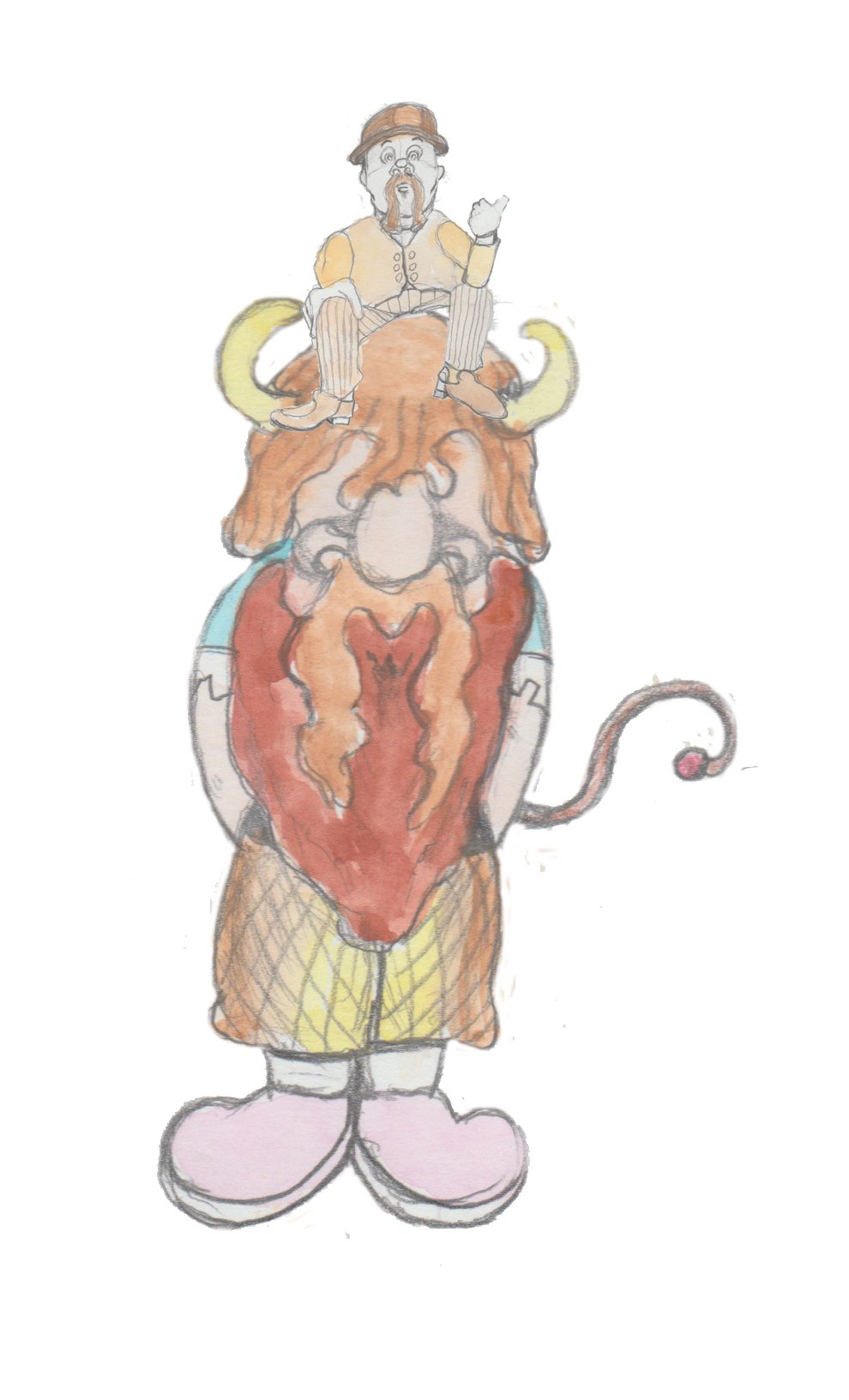
Latest Issue | Subscribe | About | Free Stuff | Past Issues

History of Trollheim
I will tell you a strange and amazing history. A history stretching back over two hundred years. About a wonderful family I met soon after the Civil War. A history stretching back into the mists of time and myth that originated in the mountains of Scandinavia. Tales of Trolls. Nattrolls to be specific that lived in the mountains with dwarves for centuries that developed membranes over their eyes. Horned Trolls are my friends that live within the Thousand Acre Woods with me, Christopher Jonathan Hulton.
Let me tell you of our tales...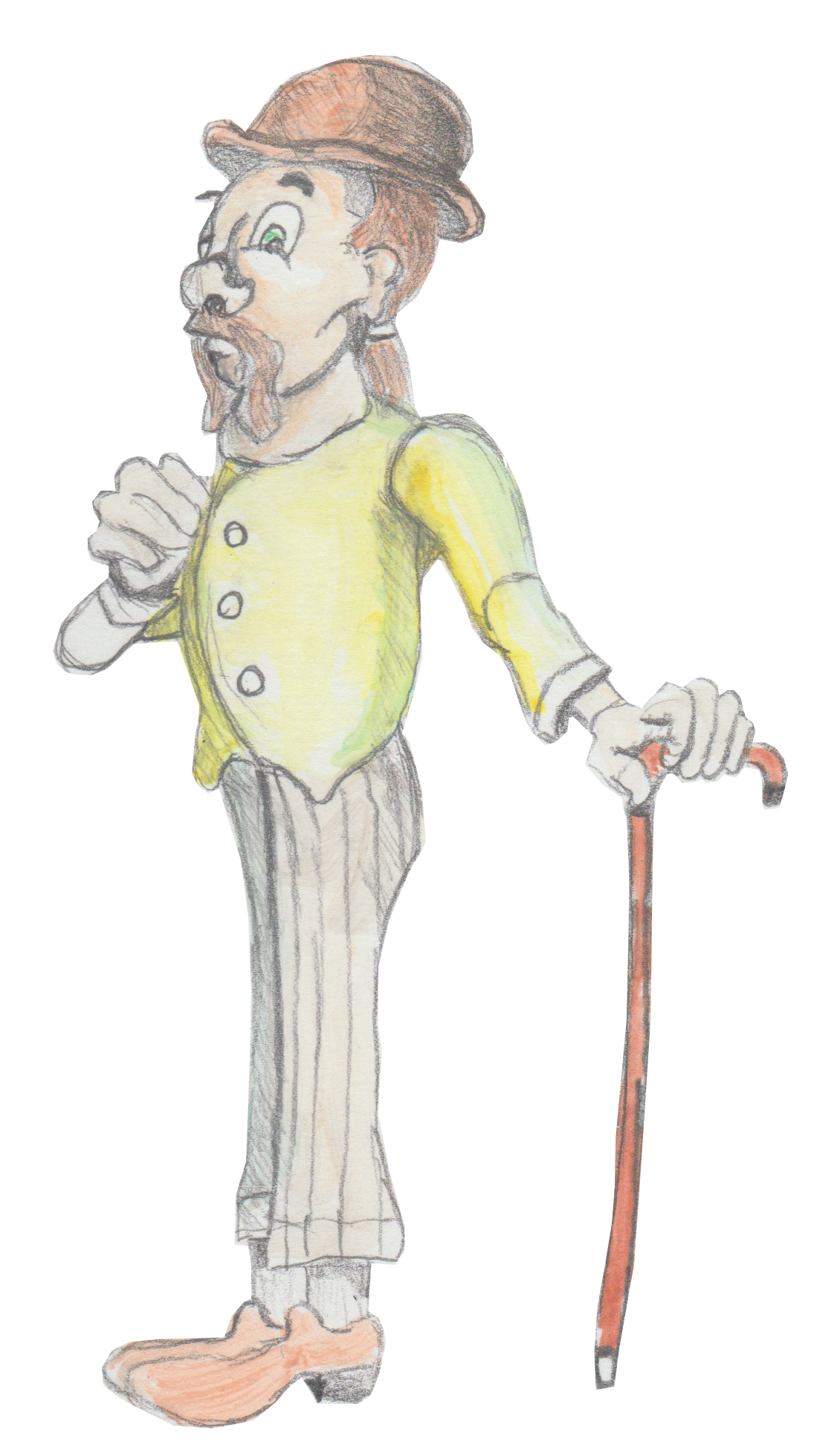
The Pine Trolls of Trollheim
But my favorite people of all are Bjorn and his family of Nattrolls, who came over with the Swedish colonists on the Delaware River.
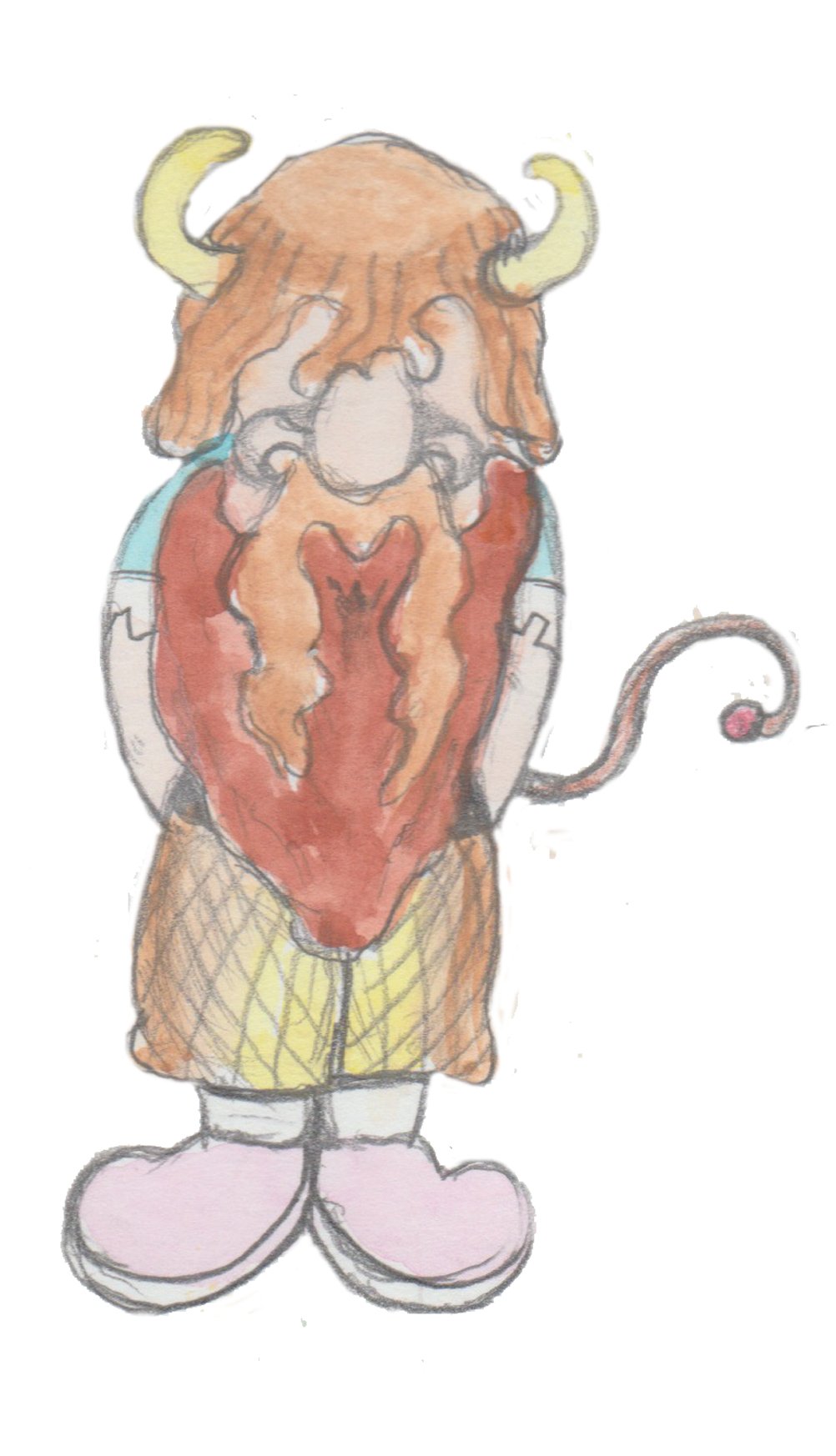 Bjorn the Nattroll
Bjorn the Nattroll
Now, in 1607, Christian IX of Sweden was raiding Lapland in Northern Norway, where we have seen many Trolls escape to leave King Olaf's abuses, the Danish king, who ruled all of Norway.
At the same time, the Swedes found it profitable to trap the Trolls, who lived with the Sami up in the mountains, and sell them off as slaves. Some Nisse fell prey to this, but the Natttrolls suffered the most.
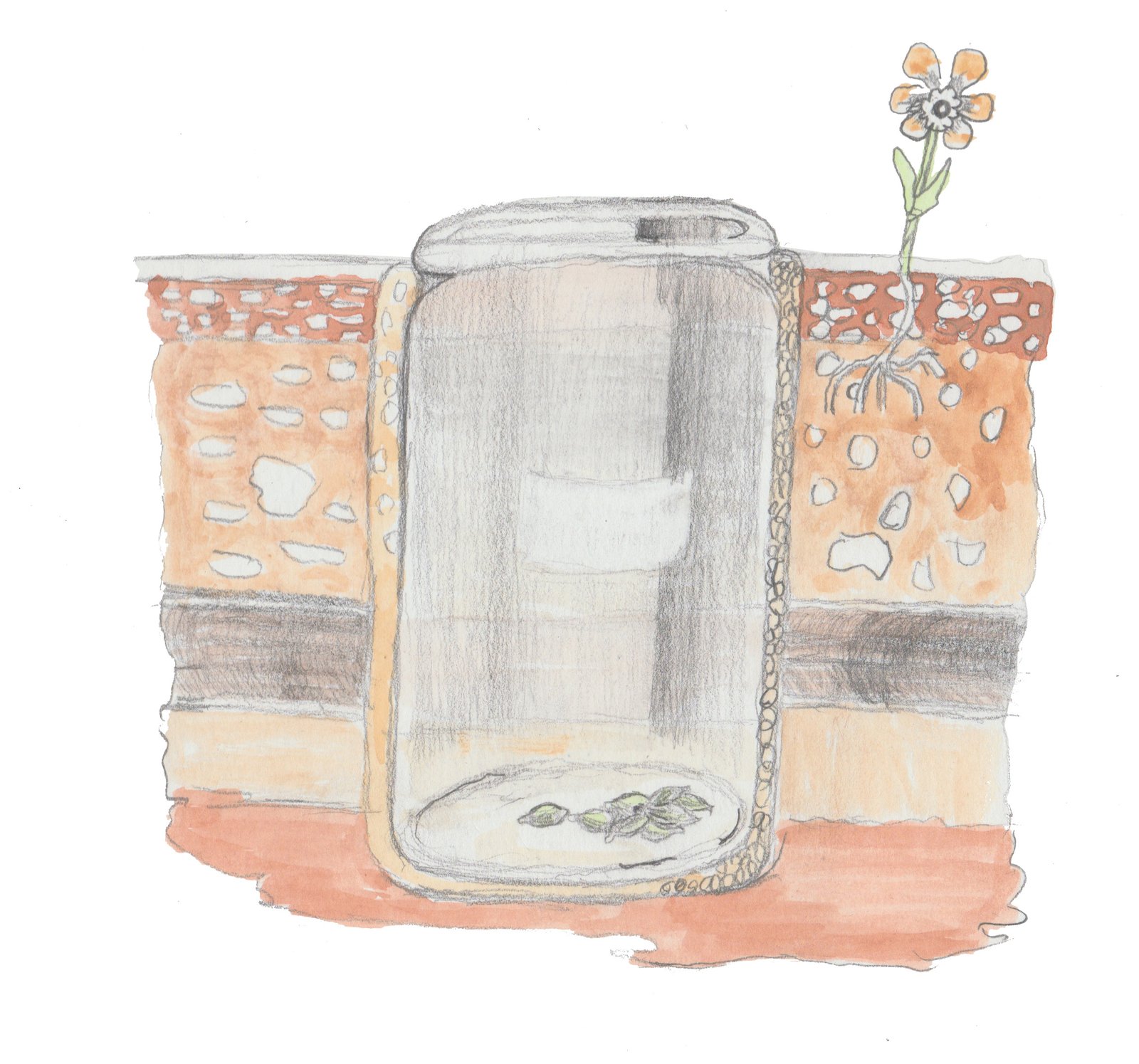
You might ask, "How would they capture a creature that could be as big as a house and the next moment be as small as an ant or nisse?" The Swedes would dig a hole and place a glass jar blown with lead inside, filled with sunflower seeds. Nattrolls cannot ever resist sunflower seeds, which remind them of their homes in southern Norway before Olaf's reign. Plus, they love their oily taste, which helps them stay out in the sun all day!
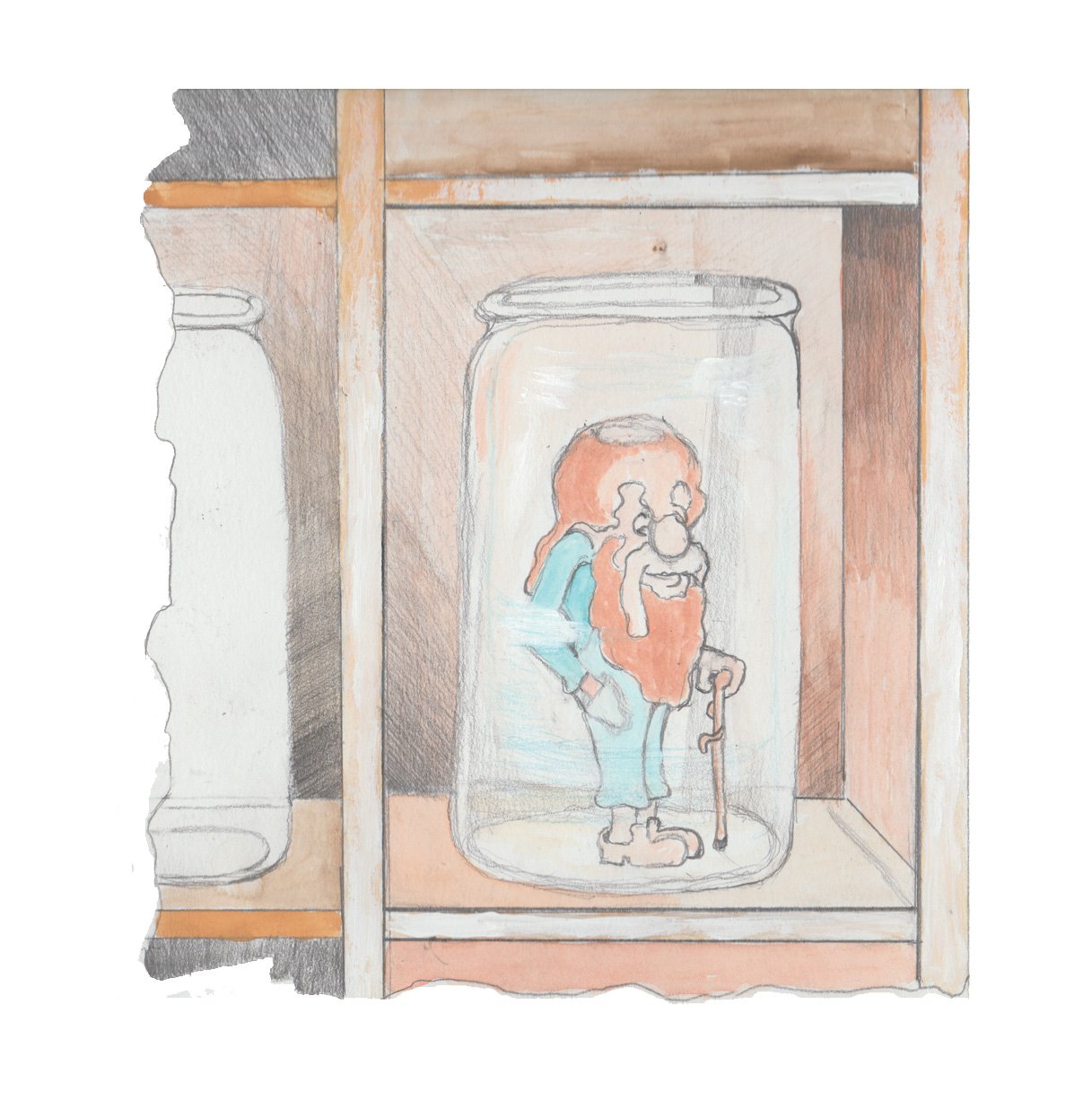
Gramps
So the Nattrolls would shrink down to fit into the jars, and they would trip a wire, slamming a lid on the jar. Then weekly, the Swedes would collect the jars just in time before the Nattroll could eat the last of the seeds.
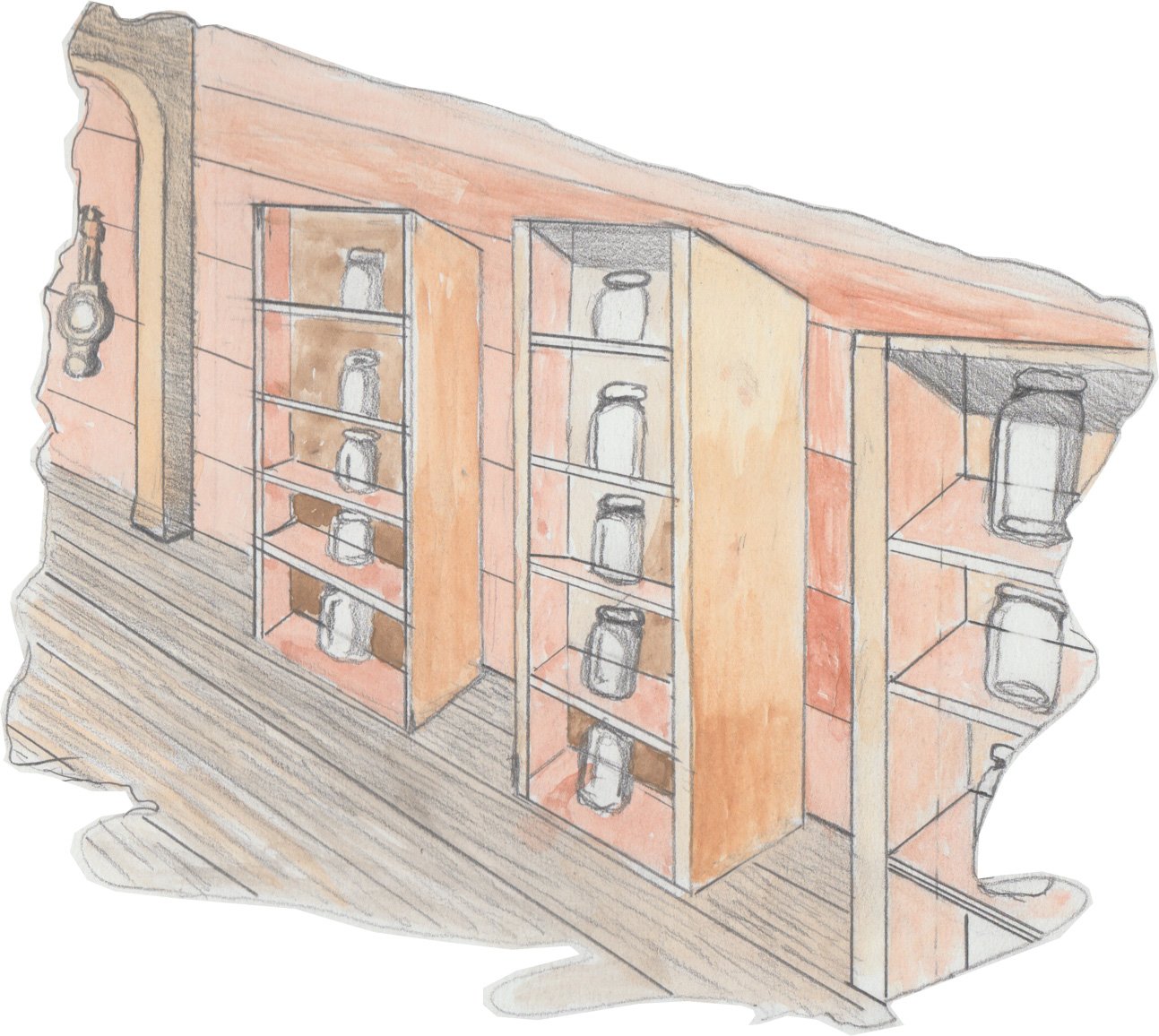
They were placed on massive shelves in the holds of their ships and brought them to their colony in the Pine Belt.
The majority of them were interned at Fort Nya Elfsborg, where their slave market was held. The fort was named after another name for Trolls, elves. The Nissen, as elves are called in Norway, were the major merchandise at the fort.
Bjorn and his family didn't stay long, as they grew so tall that they just climbed over the fence and escaped into the Pines. The Nissen were stuck due to their diminutive size and were forced to work in their homes and stables, but little did they remember the scorn of the little ones when they were not treated fairly...
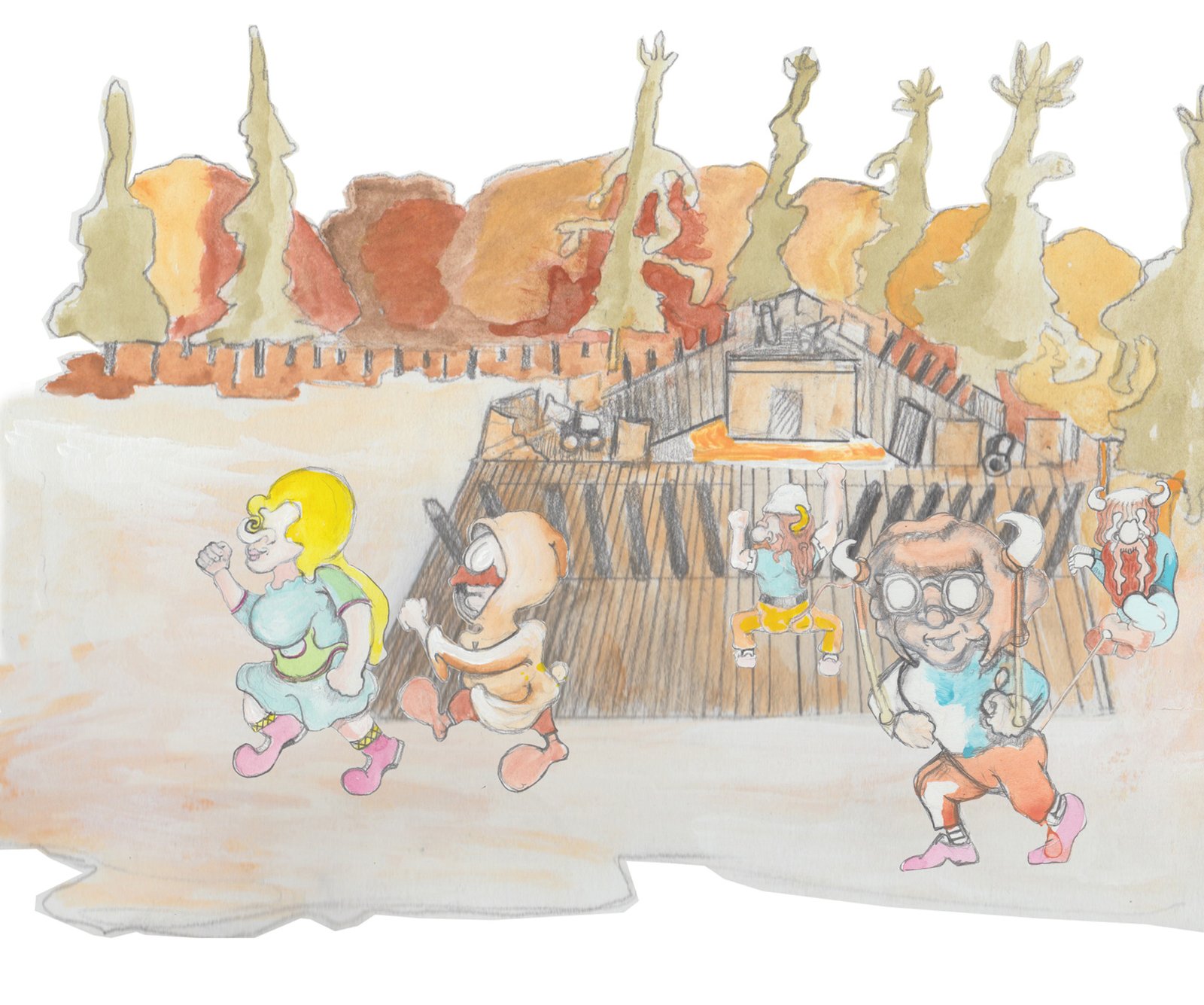
In time, Bjorn and his family fought with the Dutch Frisians to conquer the fort and set the rest of the Nattrolls and Nissen free. To this day, they all roam through the woods of the Pine Belt. Few fled to the Poconos across the Delaware, and few of them made it further north to the Catskills, which reminded them of the mountains back home in Norway.
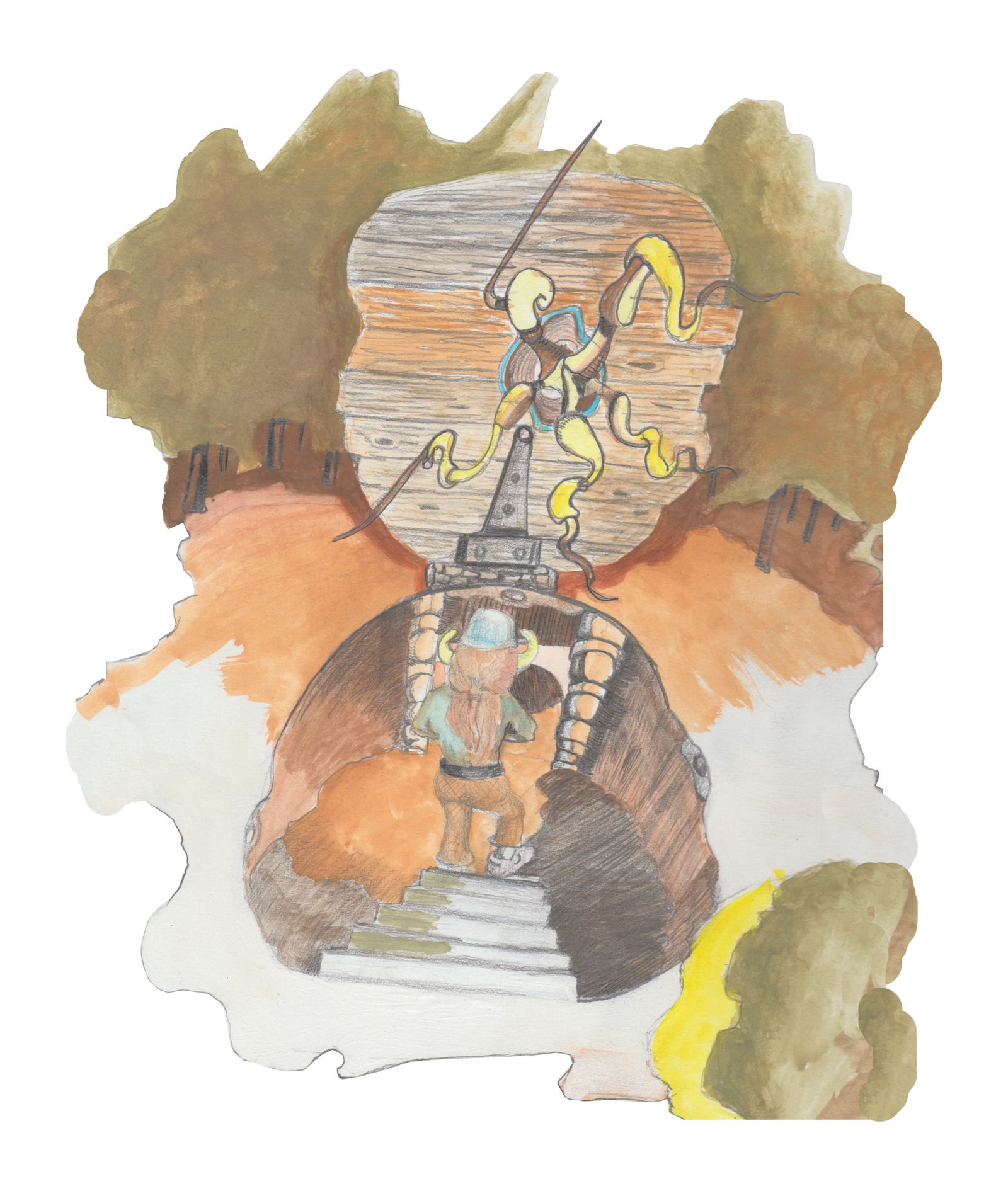
Nattrolls love eating boulders and crystals that grow underground in tunnels accessd through bent trees that flip over on hinges.
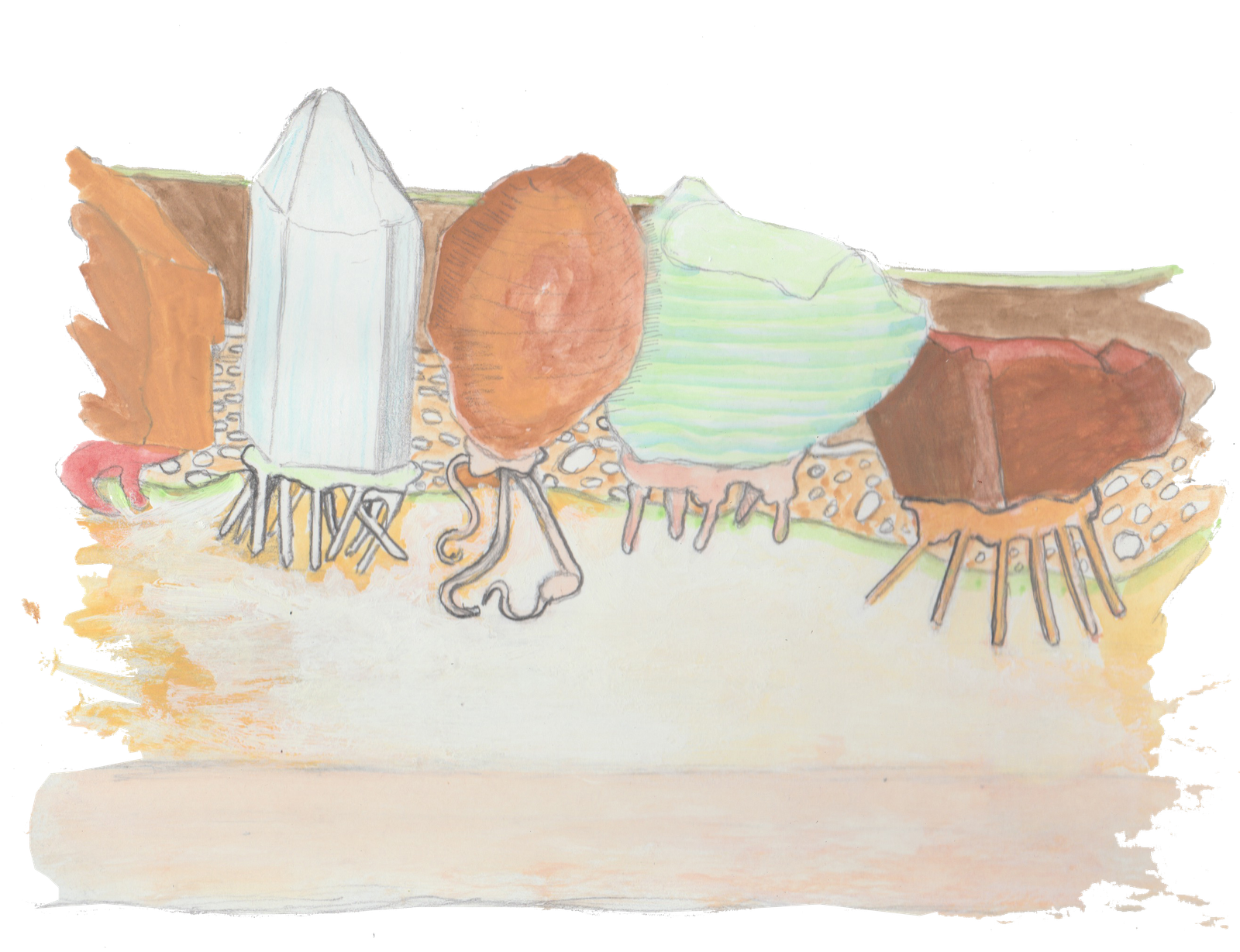
Most of the Nattrolls remained in the Pine Belt. Or called the Pine Barrens, to some of the fashionable, is an area of about 1.1 million acres of Atlantic coastal pine barrens ecosystem, stretching across more than seven counties of New Jersey. The Atlantic coastal plain began to form around 170–200 million years ago. The Barrens formed in the southernmost and newest land area in New Jersey 1.8 to 65 million years ago, during the Tertiary era. During the Pliocene Epoch, the Pine Belt was one of four islands in the Atlantic, including a piece of the Scottish Highlands, Nova Scotia, and Nantucket. All with their own pine barrens, which set roots to keep other hardwoods at bay many centuries later.
Part of the pitch pine strategy that dominates this area is to call on the mycelium to attract a caterpillar like pine looper to bore holes in their bark, drying it out so it would catch fire and burn away all of the undergrowth and competing trees. This, in turn, frees up land and sun for the pine trees to drop their cones that open in the heat to germinate in that brand new fertilizer below. Plus, new pine needles will sprout on the pitch pine within weeks.
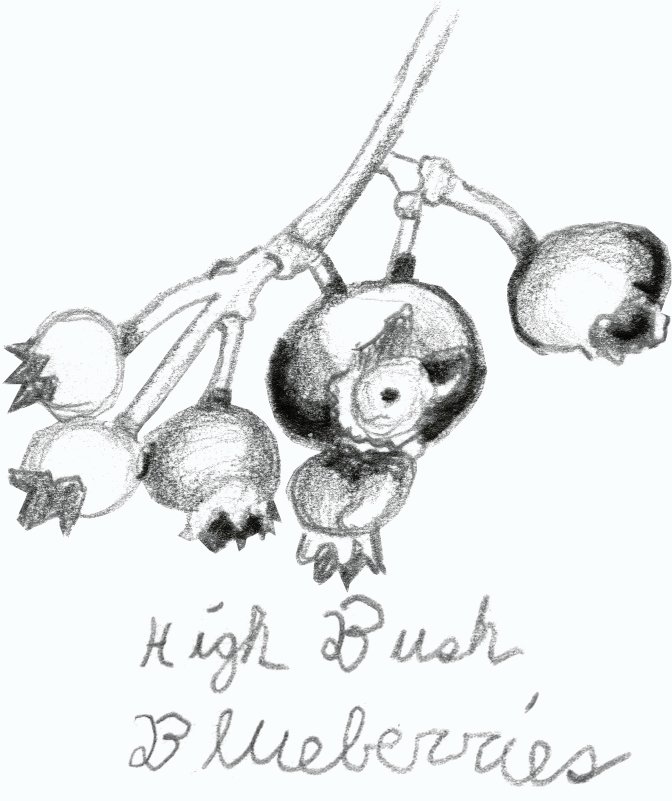
The Pine Barrens are home to at least 850 species of plants, including more than 20 species of wild berries, including wild raisin, red chokeberry, high bush blueberry, huckleberry, bearberry, and cranberry.

Did the Swedes know something when they moved here? The old Vinland Map does look like the Delaware River. In the sagas, the Vikings do tell of sailing west of land in Vinland. If they were mentioning the Atlantic, they would have been sailing east of the coast. Much later, a town named Vineland was created in New Jersey, where this new guy, a teetotal dentist named Thomas Bramwell Welch, decided to make non-alcoholic wine. He used pasteurization to prevent the fermentation of grape juice and encouraged it to replace wine within the church and later the synagogue…
There are Pygmy Pine, or dwarf pine, forests less than 4 feet tall, and pine and mixed oak forests. Dark swamps of Atlantic white cedar grow along the waterways, and their high tannin and acidity make it a favorite water for long sea journeys where it prevents bacteria from growing.

Nobbi and Me
At least 39 species of mammals, over 300 species of birds, 59 reptile and amphibian species, and 91 fish species call this home. Most common are the Turkey Buzzard, White-Tailed Deer, Eastern Cottontail, Northern Brown Water Snake, Eastern Fence Lizard, Raccoon, Screech Owl, Red-Tailed Hawk, Beaver, Red Fox, Squirrel, Chipmunk, Green Rough-Skinned Snake, Sunny, Pickerel, Bobcat, Brown Bear, Bass, Perch, Pine Barrens Tree Frog, and plenty more.
Beyond the grape juice, we have had the nation's first winery, invented the Mason jar out in our woods, forged rifles and balls for three wars now, built several fine ships, dug tons of clams, had a few paper mills, some terra-cotta, and burned a lot of trees for charcoal and pine tar.
Some of the famous people we have living here are the witch Peggy Clevenger, Fiddlin Sammy Buck Giberson, who outplayed the devil, and the Jersey Devil himself. All of which live in my home town of Whitings.
Peggy Clevenger, though her husband sends messages from hell up the well to her, keeps much to herself if she is not serving applejack at her tavern. They say she has made plenty of gold out there on the old stage road to Philadelphia. If you catch her by her home on Pasadena Road and disturb her privacy, it is said—she will just get up and turn into a rabbit and make away with herself!

Now the original people here, the grandfathers of all the tribes, are the Lenni Lenape. The clans in Whitings are both Pùkuwànku the turtle and Pële the turkey. Of the Turkey, we have the Koo-wä-ho'ke of the Pines and the Turtle, the Lee-kwin-a-i' snapping turtles.
They build their gardens in the graveyards where their ancestors are buried, sitting up in round holes. Many of their important fellows have small mounds and sometimes circular ditches around them. These gardens are along the many riverways in the pines.
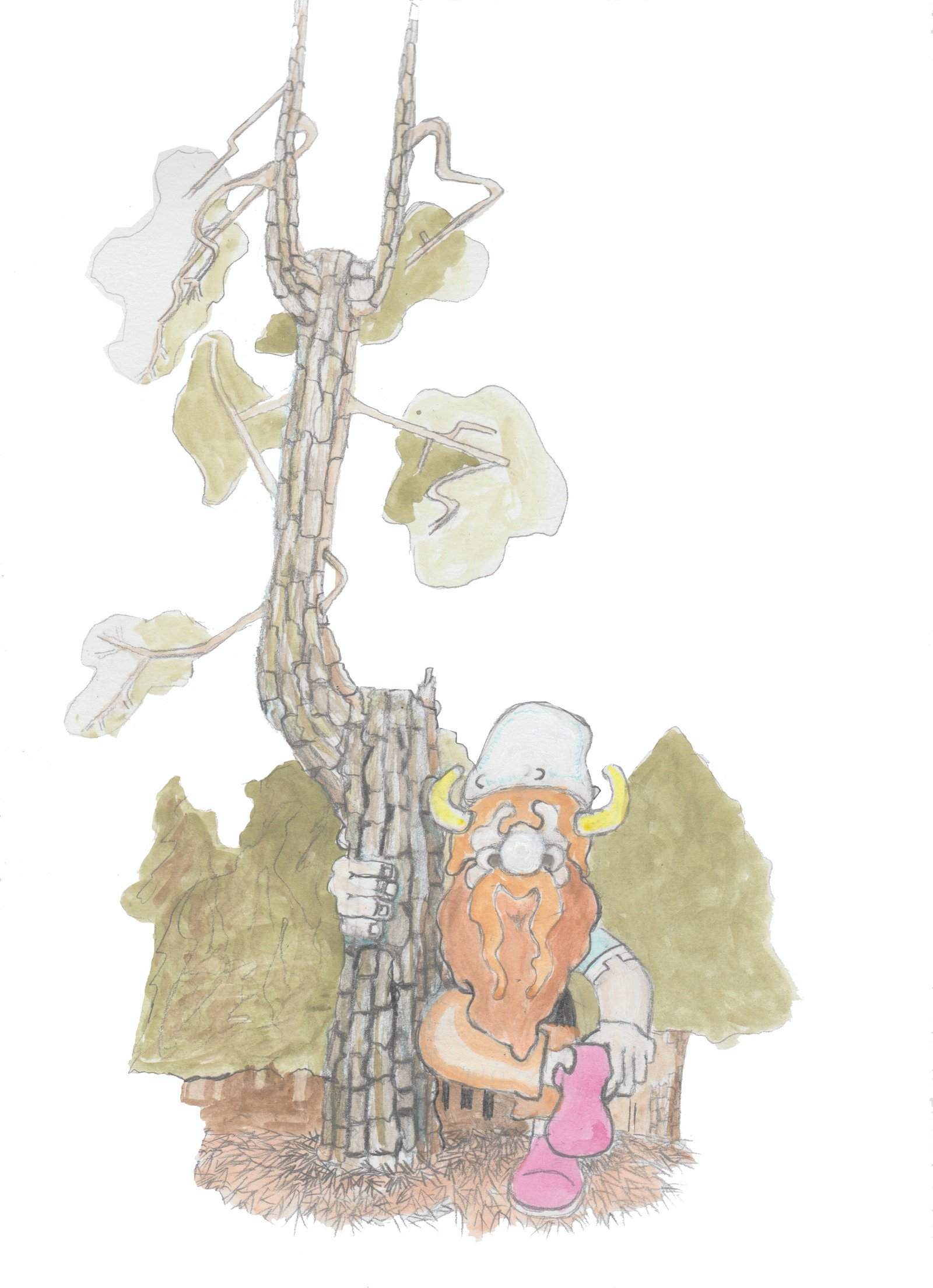
Here, they bend the flexible pitch pine into lightning bolts and fork the tops of the pines when they are young. Many trees lean and point to important sites for them. The oldest and thickest pines lean and point to their other large cousins in other gardens miles away. They also bend the trunks at 90-degree angles to direct themselves through the woods at the height of a deer's back. Many older bent trees have been allowed to have their trunks grow higher after the bend.
They live on acre lots with a single scarlet oak on one side surrounded by a forked mixture of trees in a circle, and on the other perimeter, they grow post oak with triple trunks surrounded by similar forked trees as before. On these lots, they grow winterberry for tea, sweetgrass to keep the mosquitoes away, blueberries to sweeten their stomachs, and black jack oak for acorns. For decoration, they grow large hedges of mountain laurel. Their houses are made of pitch pine covered in wattle-and-daub with thatched roofs.
On the sides of hills, they burn the forest to clear the land to grow their crops. On these farms, they have three observatories for three seasons. Each is a large clearing to make the night sky visible at different times of the year to determine when to plant. They grow beans, corn, and squash, along with many medicinal plants
I live within the Thousand Acre Woods which was set out by General Lacey, now owned by William Hurry. To the West is Duck's Pond and Furnace Pond and Pop's Clan with their graveyard along the Davenport River and Swamp. To the East is Fox Hollow and the beginning of Trollheim where Pop-Pops and the clan of the Disappearing Pond live. Here they have their own graveyeard and even elaborate garden. In the Disappearing Pond resides the Great Horned Serpent. One of the many lakes and ponds he moves through. Bjorn and his family live to the west in Trollheim.
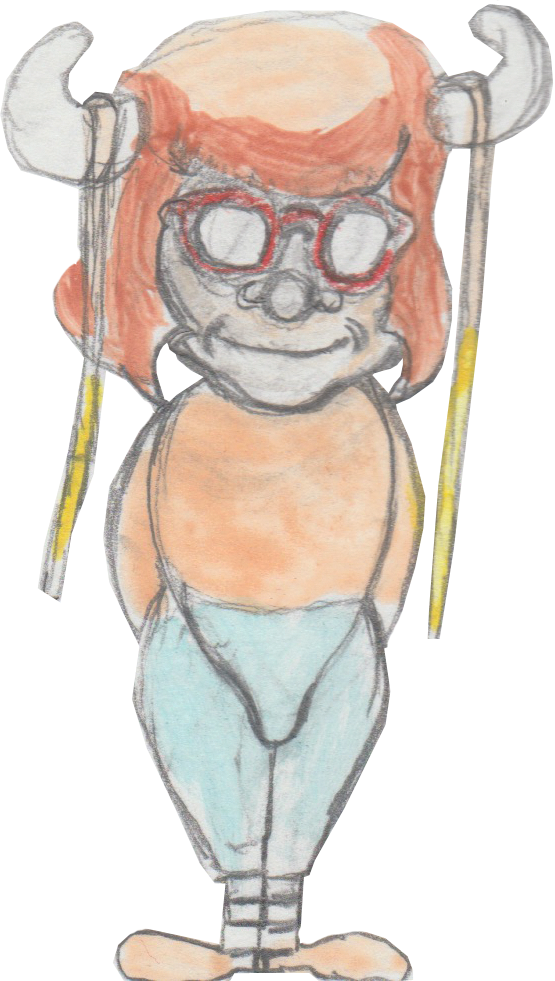 Angrboða
Angrboða
In Bjorn's family is Helgi his wife, Gramps his father, his daughter Angrboða, and their frien Bosco the Bear.
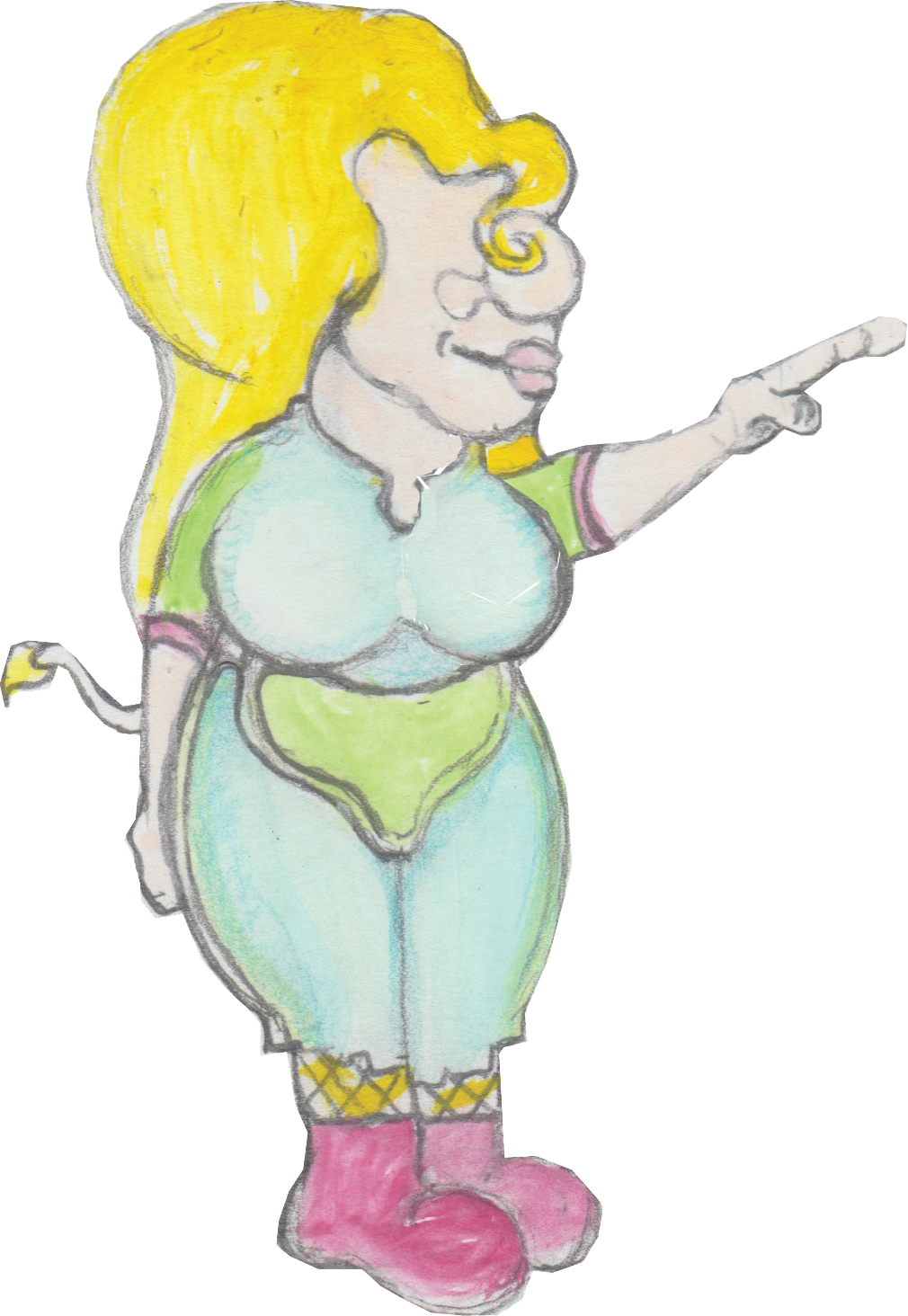 Helgi
Helgi
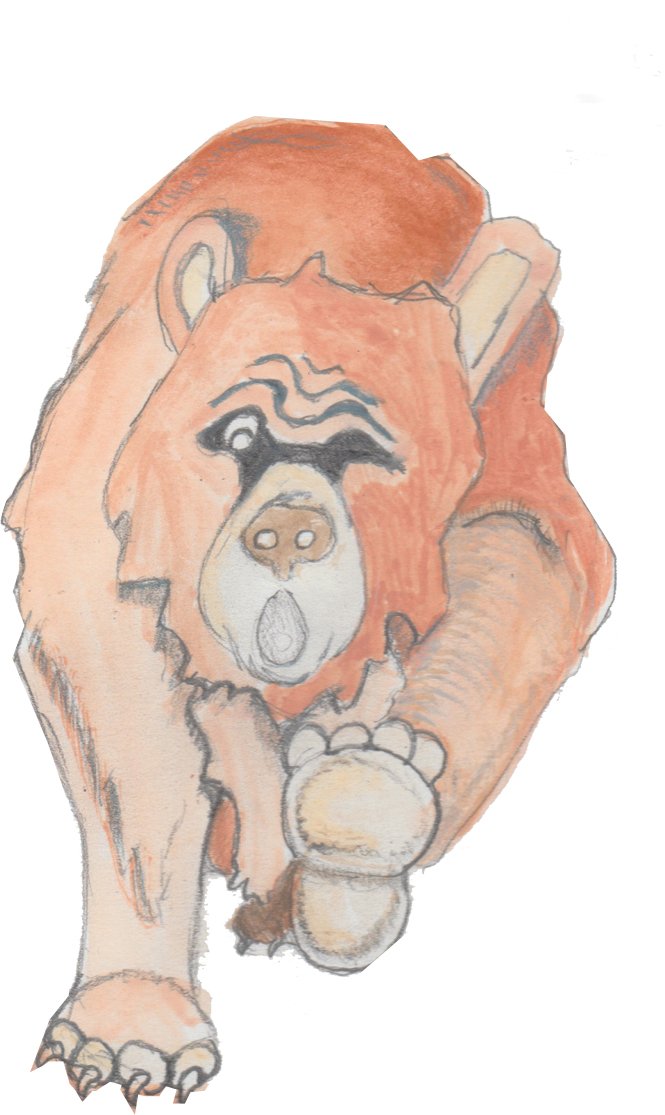 Bosco
Bosco
Swedish Colony
Dutch merchant William Usselinx, a distinguished merchant of the Dutch West India Company, was the first to propose to the Swedish Government a scheme for planting a colony in America. In the year 1624, he presented to the Swedish monarch Gustavus Adolphus a plan for the organization of a trading company to extend its operations to Asia, Africa, America, and Tella Magellanica. By royal authority in Stockholm, the edict was issued on July 2, 1626. Wealthy notables in the country supported the plan. Ships and all necessaries were provided. Then Adolphus was killed in battle during the Thirty-Year War.
The Dutch records at Albany of an official protest issued by Kieft, the governor of New Amsterdam, complain that the Swedes were there in the spring of 1638.
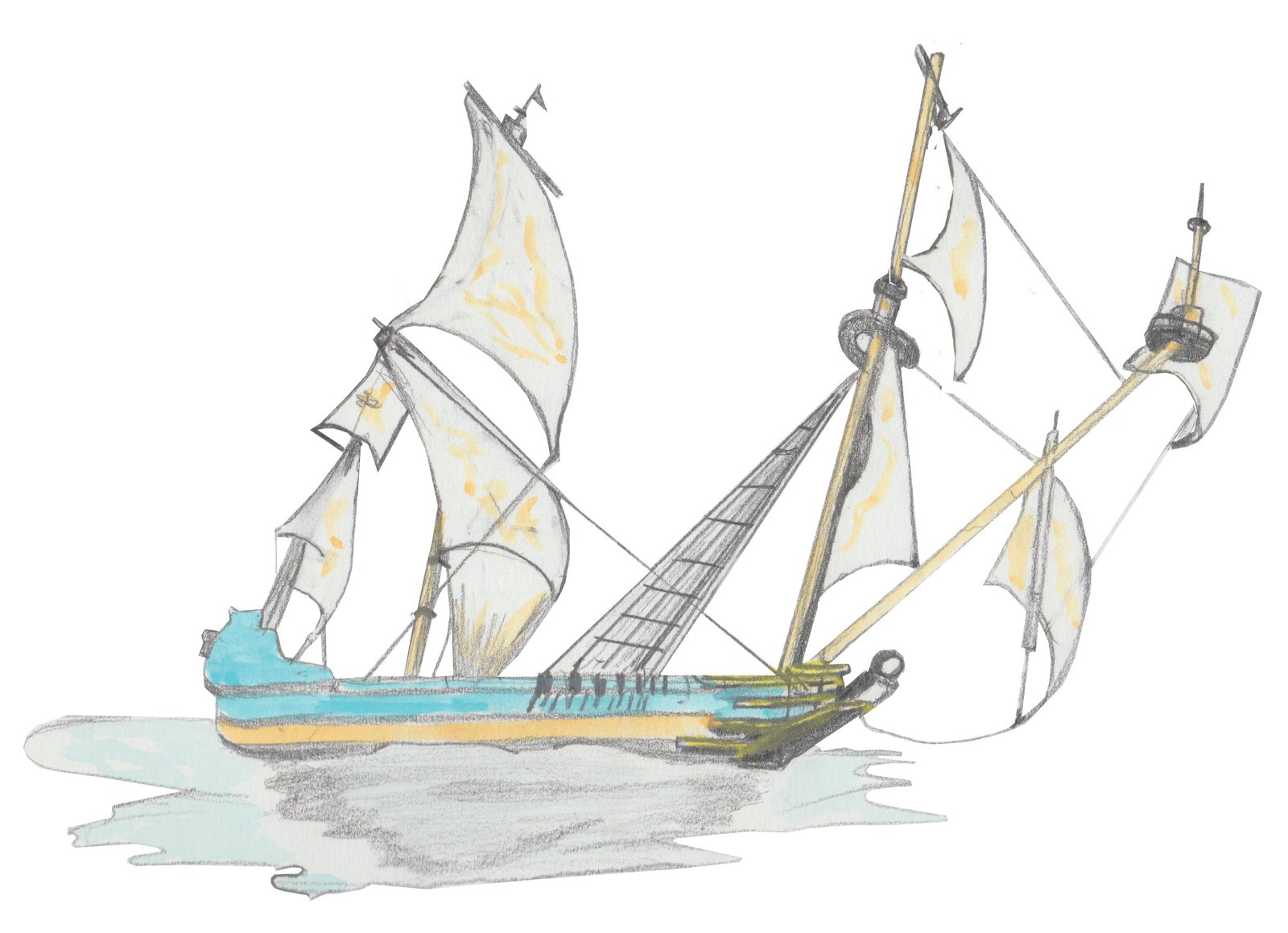
Peter Minuet, an ex-governor of the Dutch West Indies Company, conducted to the shores of the Delaware the Swedish colony made up of mostly Finns, Swedes, and their Troll slaves. Two ships, the pinnace Kalmar Nyckel (the Key of Kalmar, a pinnace ship made of pine; how appropriate for a ship to sail to the Pine Belt in...) and the transport Fågel Grip the Griffin Bird, left Gothenburg in December 1637 to begin the Swedish South Company, backed by German, Dutch, and Swedish investors. The Kalmar Nyckel suffered damage in a North Sea storm and sought repairs in the Netherlands. The two ships were laid up for a year, finally resuming their voyages on New Year's Day, 1638.
They landed at Henlopen, a point of land near modern-day Lewes, Delaware. They called it Paradise Point. Minuet then purchased the land from the Capes to the Delaware Falls near Trenton, NJ. One area settled was New Stockholm, located on the Raccoon Creek in Gloucester County, NJ.
It is to be assumed that the building of a fort was their first undertaking. They built Fort Christina, named after Queen Christina of Sweden, east of present-day downtown Wilmington, Delaware, at the confluence of the Brandywine River and the Christina River, approximately 2 mi upstream of the Delaware River. This was owned by the Dutch, but they didn't have the military strength at the time to keep it.
Soon after, Minuet left for Stockholm with a second group of settlers. He stopped in the Caribbean first for a load of tobacco, but he was lost in a hurricane off St. Christopher. Over the next seventeen years, they made more than eleven trips without him, four of them with the Kalmar Nyckel, bringing about 600 Swedish and Finnish people to the colony.
Then the earthworks were strengthened in 1640 by Governor Peter Hollander Ridder. In 1643, Governor Johan Printz established two new forts on each side of the Delaware. The largest is Fort Nya Gothenborg (New Gothenburg) on Tinicum Island in Delaware County, Pennsylvania. This became their new capitol. He built a manor house, known as Printzhoff (Printz Hall), there for himself. On the Jersey side of the Delaware, he erected Fort Nya Elfsborg in the marshy lands between the Salem and Alloway Creeks near Salem. Often referred to as Fort Mosquito, To defend it and prevent Dutch ships from sailing north, he installed several 12-pound cannons aimed at the Delaware River.
In 1651, the Dutch, under Peter Stuyvesant, established Fort Casimir near New Castle, only 7 miles south of Fort Christina, in order to menace the Swedish settlement.
The Dutch and the Swedes did work together once to beat on the new English colony near Salem, but soon afterward, the Swedes demanded the Dutch give up Fort Casimir. In 1654, Governor Johan Risingh ordered the Swedes to take the fort. Risingh added a wooden palisade around the earthworks of Fort Christina, just in case he might have angered the Dutch.
Stuyvesant kept the Connecticut English at bay by building a wall at the northern border of New Amsterdam on what became Wall Street. He then led a squadron of ships down the Delaware River, arriving on September 9, 1654. An army of six to seven hundred men arrived, and one by one, the Swedish forts fell. Though Sweden was a powerful land empire, they were weak with their navy, and they were still engaged in the Thirty-Year War and could not provide support for their colony against the Dutch. Nya Elfsborg was burned and abandoned by the hopelessly outnumbered Swedes. Fort Christina held out for ten days before they surrendered. Stuyvesant renamed it Fort Altena. Some of Rip Van Winkle's kin were at that raid. The last fort to fall was Nya Gothenborg, which surrendered on the 25th of September.
This ended the official Swedish colonial presence in North America, though most of the colonists remained and were allowed to continue their whaling, fishing, linguistics, and religious practices by the Dutch. New Stockholm continued to thrive, but by 1677 it was all but abandoned in favor of the inland settlement at Swedesboro, NJ, founded sometime after New Stockholm.
Because of the colony, the log cabin was introduced to America, and Swedish John Hanson was president of America when George Washington handed Cornwallis' sword to Congress after the battle of Yorktown. On a side note, not too far from Whitings the last battle of the Revolutionary War happened at Cedar Bridge Tavern a few years after Yorktown...
Trollheim
Trollheim encompasses most of New Sweden's old territories. They agreed to the Lenni-Lenape border to the north that the Swedes agreed to. There is some debate about whether the border is to the north or south of the Toms River, but as of late, with the urban sprawl in Dover Township, most Nattrolls tend to stay in the woods that extend south from Giberson Mills in Whitings. Especially since Gramps in the spring of 1868 was seen walking down Water Street (at the height of 16 feet) on the way to his latest paramour.
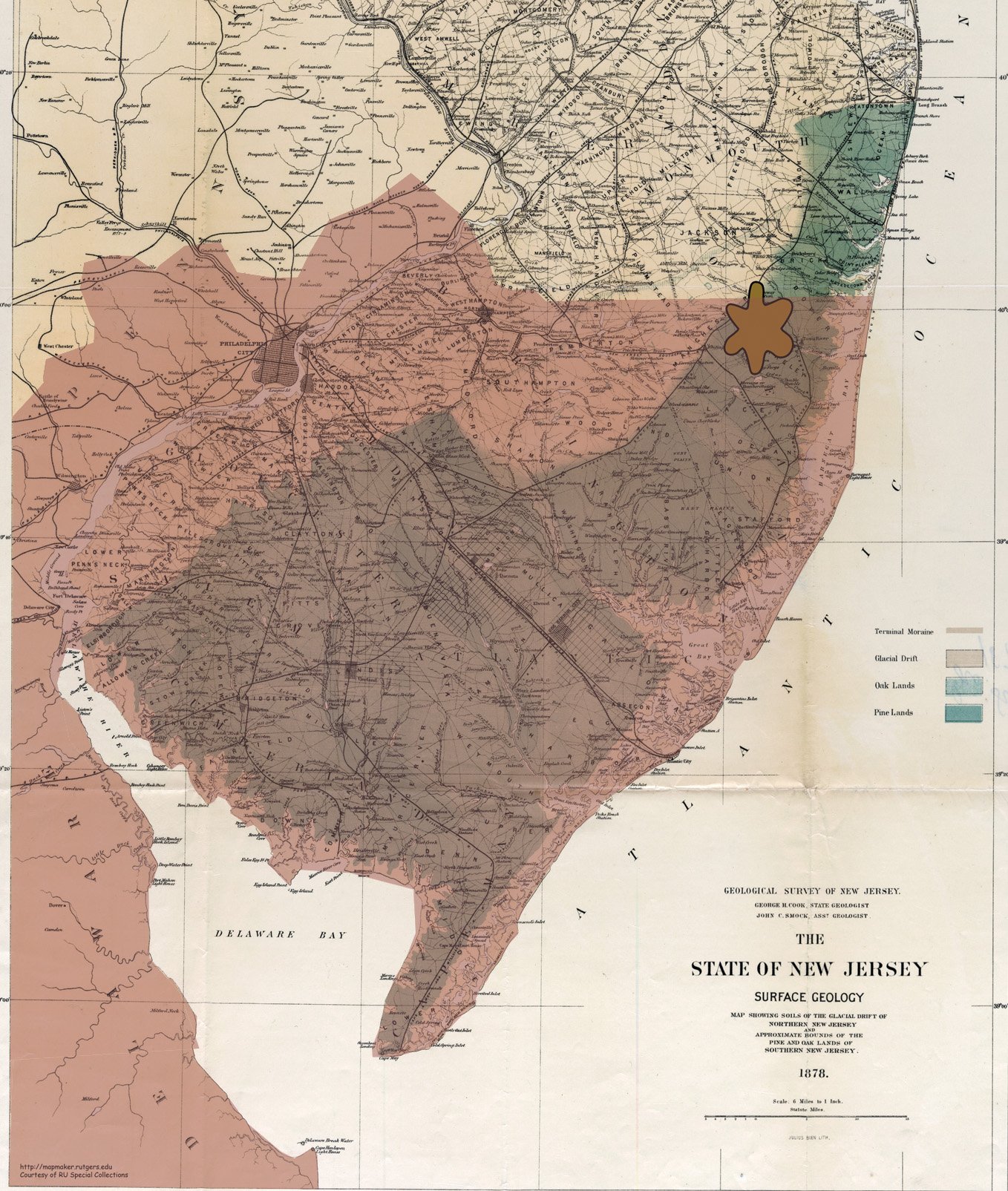
The New Jersey Courier printed that many people reported seeing the Jersey Devil stalking through their yards. Gast was much put out for the unwanted attention toward him, a Gastornis that didn't live this long to end his species' line for who he calls 'that old fart'. Some Nattrolls would venture past the river, no taller than a mouse, but after Pillbrook was almost stomped to death as a parade of elephants walked down Main Street with Bailey's Circus, most Nattrolls did not venture into town.
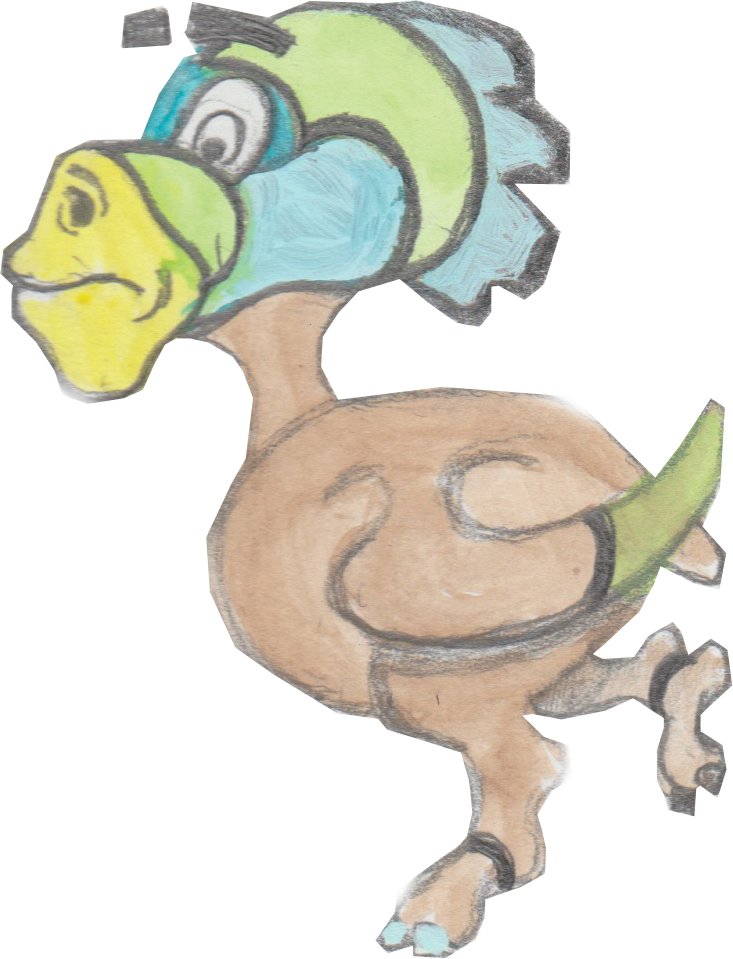 Gast
Gast
Gastornis first appeared in the Pine Belt at the end of the Pleistocene Period, as the forest was just rising out of the Atlantic. Over the centuries, the Leni -Lenape passed many myths about them being a great dragon. Old Ben Franklin, who used to ride the old stage coach road in town to visit the various taverns and women on his way to Clam Town on the shore, jabbed his almanac competitor, Titan Leeds, calling him the Leeds Devil. It was only recently, soon after the recent war, that some drunk at the tavern in Brownsmill—probably some city slicker in his cups—said he had seen some monster. The Quakers are still looking for blood after Daniel Leeds retaliatory actions took it out on Deborah Leeds and created the current myth of this deformed monster of a child roaming the woods. Gast has not been the same since. Don't ever mention the Leeds family or his posterior...
Many people tell tales now, since it has become fashionable to do so, about sightings of this devil everywhere in the Pines. They even got my mother to think she had seen him, but she had. Though he is no devil, he calls himself a gastornis after his father met a paleontologist from the College of New Jersey. He felt much better after knowing who he was, for Plato does say the secret to life is to know oneself. So he named his child after the man who discovered his ancestors who didn't know they were lost, Gaston Planté. Gast, for short.
Though his father said the paleontologist said the name meant guest, Gast always felt funny being a guest in his own home...
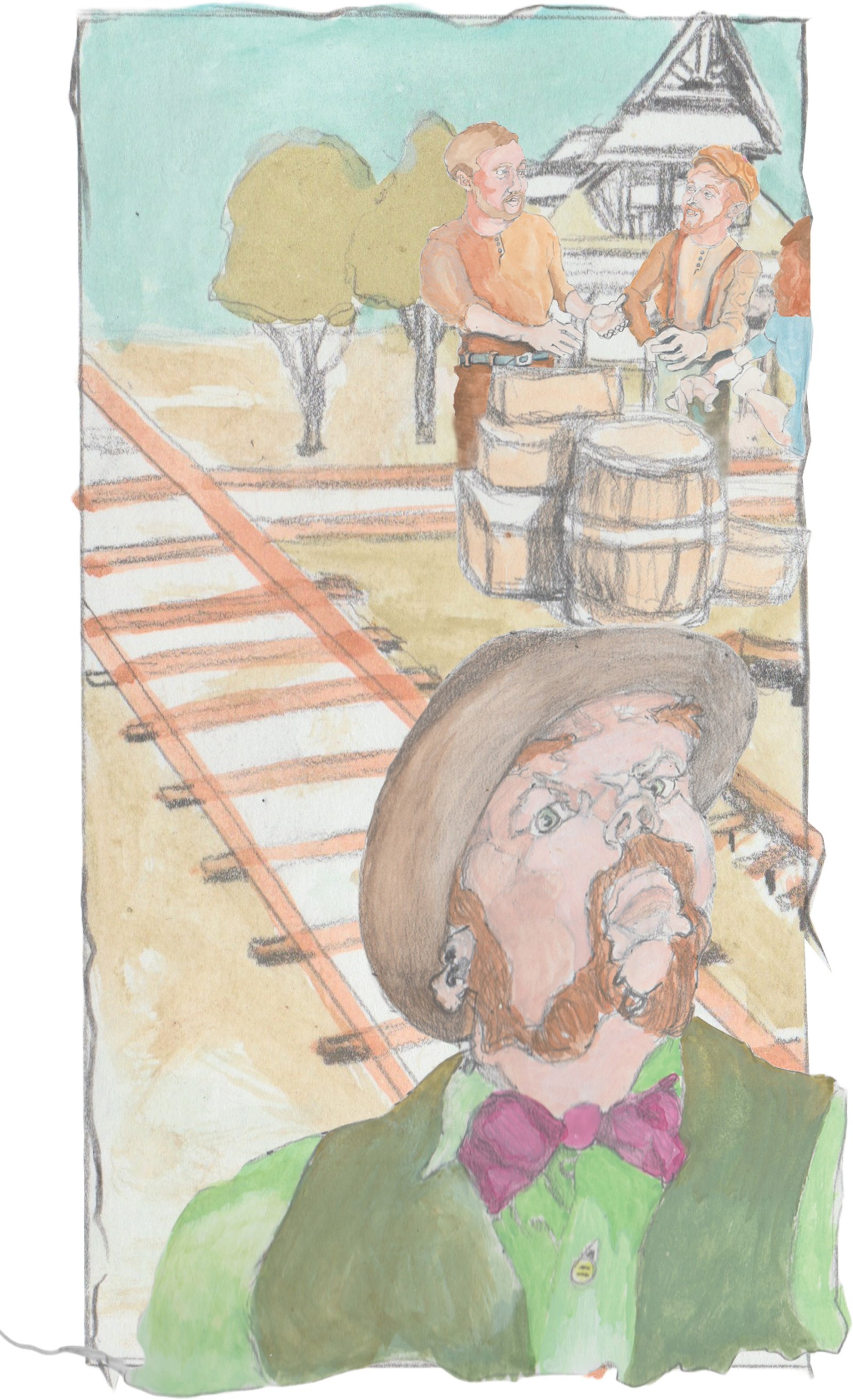
Here in Whitings, we have plenty of myths and legends. Our founder's family was one of the founders of Connecticut and Yale. His great-great-grandfather was even a priest in that spectre-filled town prior to the Witch Hysteria of 1692. Nathaniel Whiting built a train station to move his lumber out of town. Also, Dow Gun Powder utilized those rails leading to Manchester, where their proving ground is. During the Civil War, the railroad in Manchester won the contract to deliver soldiers through New Jersey. In Whitings, they had to disembark to load into train cars that ran on older narrow gauge rails than the current Cattle Car gauge that runs from Massachusetts. William Hurry was making ball and cannon for the war in Bamber Lake in the old Ferrago Forge of the old general from the Revolution.
In another mill in town, the Gibersons cut cedar to make crates for the cranberry and blueberry industries. Down on Lacey Road, before the dead man's curve, was the home of Sammy 'Buck' Giberson. It was said that he almost lost to the devil on an old bridge. The devil played three tunes and out-danced old Sammy Buck. He was just extending his hand out to take old Giberson to Hell when he pulled a tune out of the air so sweet that the devil just hung his head and vanished. Sammy played all the taverns throughout the Pines, including Peggy Clevenger's and Cedar Bridge Tavern, where the last battle of the Revolutionary War was fought. Clevenger was an old witch who could shift into a rabbit to avoid unwanted attention. Her husband sent up a message from Hell by boiling the water in her well to let her know he was OK. She burned to death just up the road from the terra-cotta factory that caught fire a month later.
General John Lacey of Bucks County, Pennsylvania, originally purchased from the Lenni-Lenape the Ten Thousand Acre Wood to establish enough property and all of the ponds and lakes within it to supply bog iron for his Ferrago Forge. See, once you mine the bog iron from under the peat in the water, you must let the bacteria do their magic for three years to make more iron. So you need plenty of lakes and ponds to rotate your crop, per se.
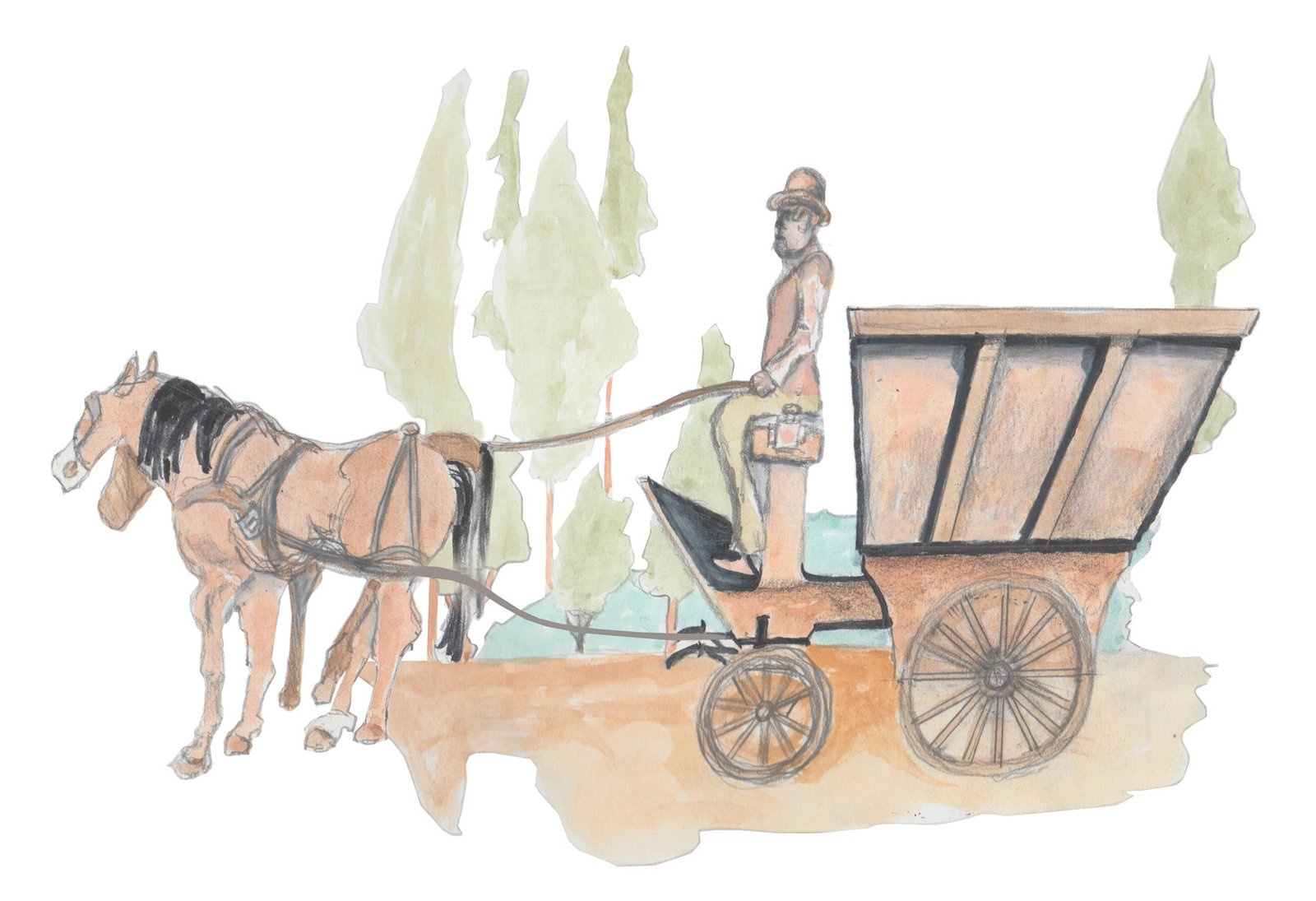
At each pond, he would set up a bloomery built into a hill so wheelbarrows of ore, clam shell flux, and charcoal could be poured in from the top and set afire. At the bottom, the slag is allowed to run out, and later, the pig iron pours out into the channels built in the sand. The channels resemble a rake with its tongs or a bunch of piglets sucking on their mother's teats—pig iron. They are still moving pig iron through these woods to Lacey's Forge on Forge Pond, where the hammers powered by a wheel on the river pound out the steel after it comes out of the furnace.
It's even rumored that General Lacey might have boarded the Commander-in-Chief of British land forces, General William Howe, in secret on the southern portion of his land near the old stage road from Philadelphia to Clam Town. See, Lacey and Howe met each other in a tavern after the Battle of Brandywine (an old custom where opposing gentlemen met each other and shared a drink), talking to Lafayette, who was the brother-in-law of the King of France.
The London bankers wanted the war to end sooner rather than later so they could receive payment for the goods they sold and the loans they granted to the Colonialists. Howe was a member of the Whig Party (the party that created the Bank of England) and was helping them achieve that goal. He received informal letters about General John Burgoyne's desire for him to join him to pincé the Yankees at Saratoga. Now he told Lafayette, who was looking for a good battle to convince the French King to support the rebels, about how Burgoyne was soon to be left out to dry and rushed to the battle to see it firsthand. Which he did and succored the French's aid to this new nation afterwards, which culminated in the French winning Yorktown for us, in which the British surrendered.
Well, truth be told, Yorktown was not the last battle of the Revolutionary War. In fact, Spain and France continued a naval battle for us for a few years, and the last skirmish in America was just outside of the Ten Thousand Acre Woods. Pine Robbers were harassing the residents of the Pine Belt throughout the war with the support of the governor of NJ, Ben Franklin's son. They had just massacred some locals at Barnegat Light. The local militia had spotted them crossing Cedar Bridge when they left the tavern and opened fire, killing some before the rest escaped. So the last skirmish was called the Affair at Cedar Bridge Tavern.
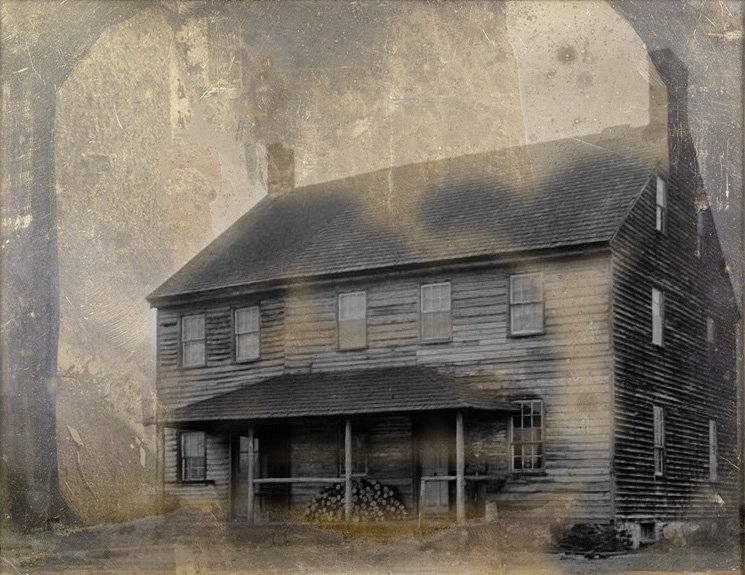
Bjorn says he caught most of those who were escaping and hung them in trees just outside of Whitesbog. In fact, after they were set down from the trees and put in prison, one left his hat in the tree. Ever since, that area has been called Ong's Hat.
The Turtle and Turkey clans of the Lenni-Lenape shared this region. My friend Pop-Pops shares plenty of the mythology and wisdom of his family with me and Bjorn. Pop-Pops and Gramps just prefer lying about women, smoking their pipes, and sharing a few braces of mead. Lenape have built beautiful gardens along the rivers where they bury their dead. They place the bodies sitting up within circular holes that leave dimples on the land after the ground settles. Mountain laurel, full of pitch pine they have forked or shaped into lightning bolts, and many clearings full of stunted, low-hanging pines among fields of lichen flank these beautiful gardens. They also plant the most fabulous flowers that smell just wonderful.
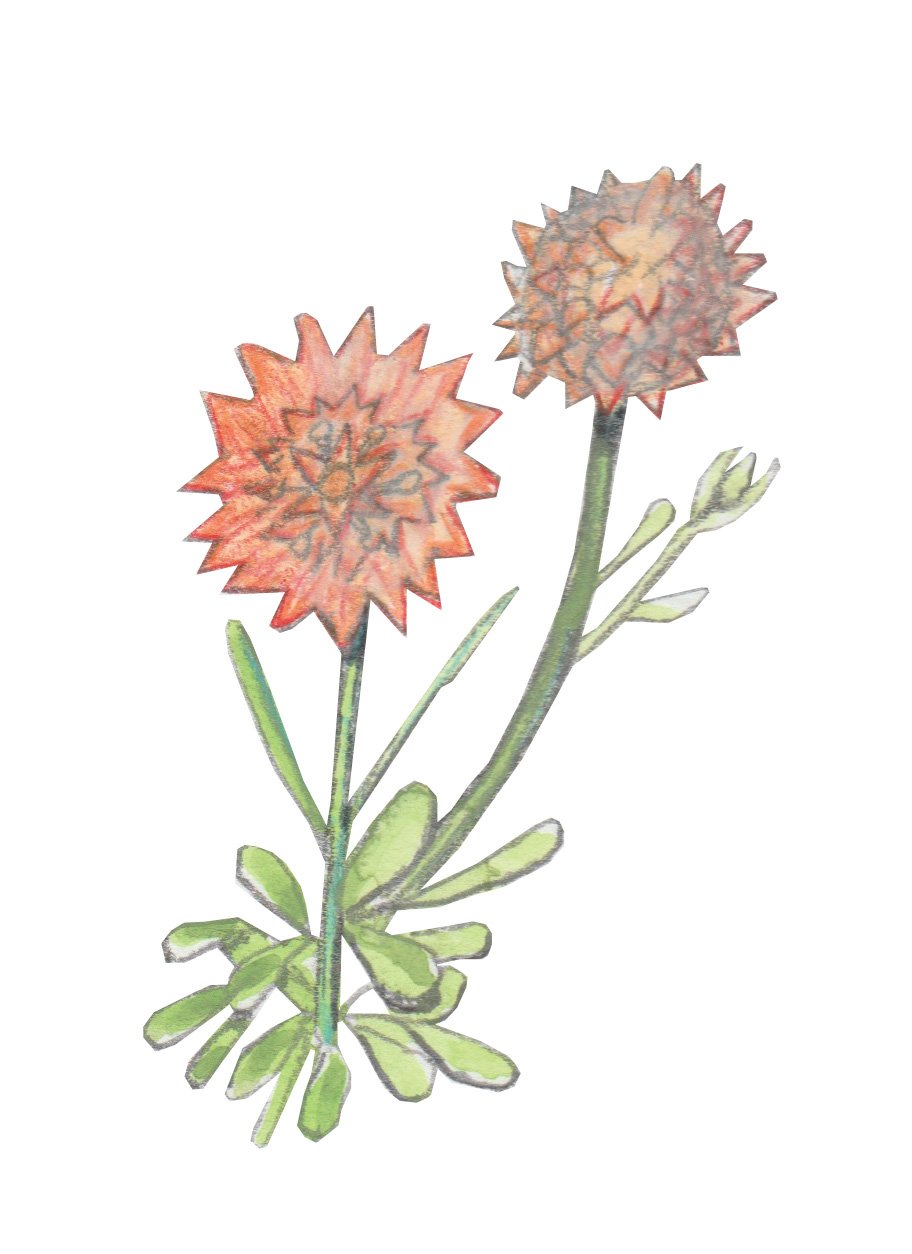
On rare occasions, you meet a taller, fairer-skinned Lenape who claims he descended from the Welsh Prince Madoc. Every good Norwegian knows Leif founded North America for the Europeans (the Asians founded it centuries prior). We just laugh at these folk...
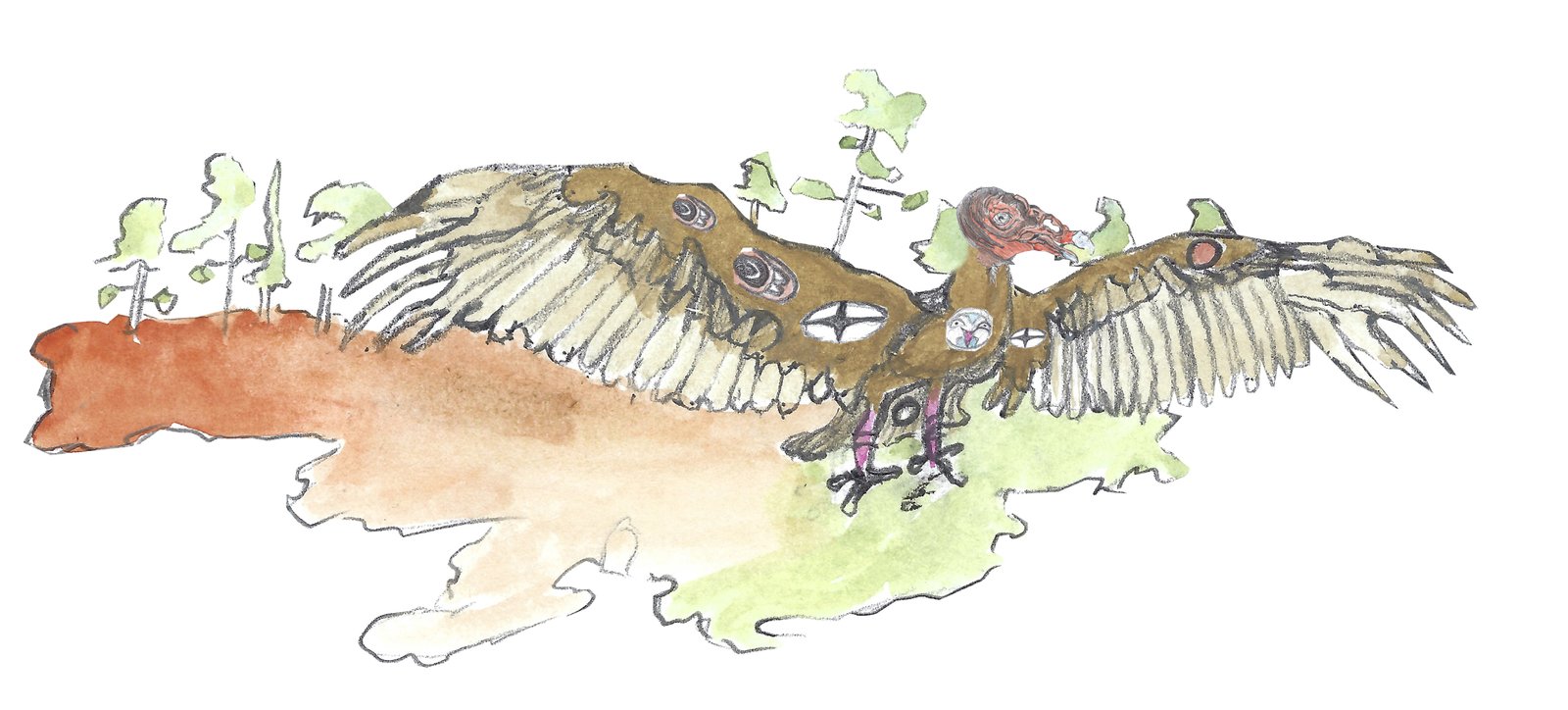
Some Lenape say they have seen a Great Serpent out in these woods. They keep praying for the Thunder Bird to protect them from seeing it out in the Pines. The Swedes named a few rivers Drake after their word for dragon, but what do the Swedes know...
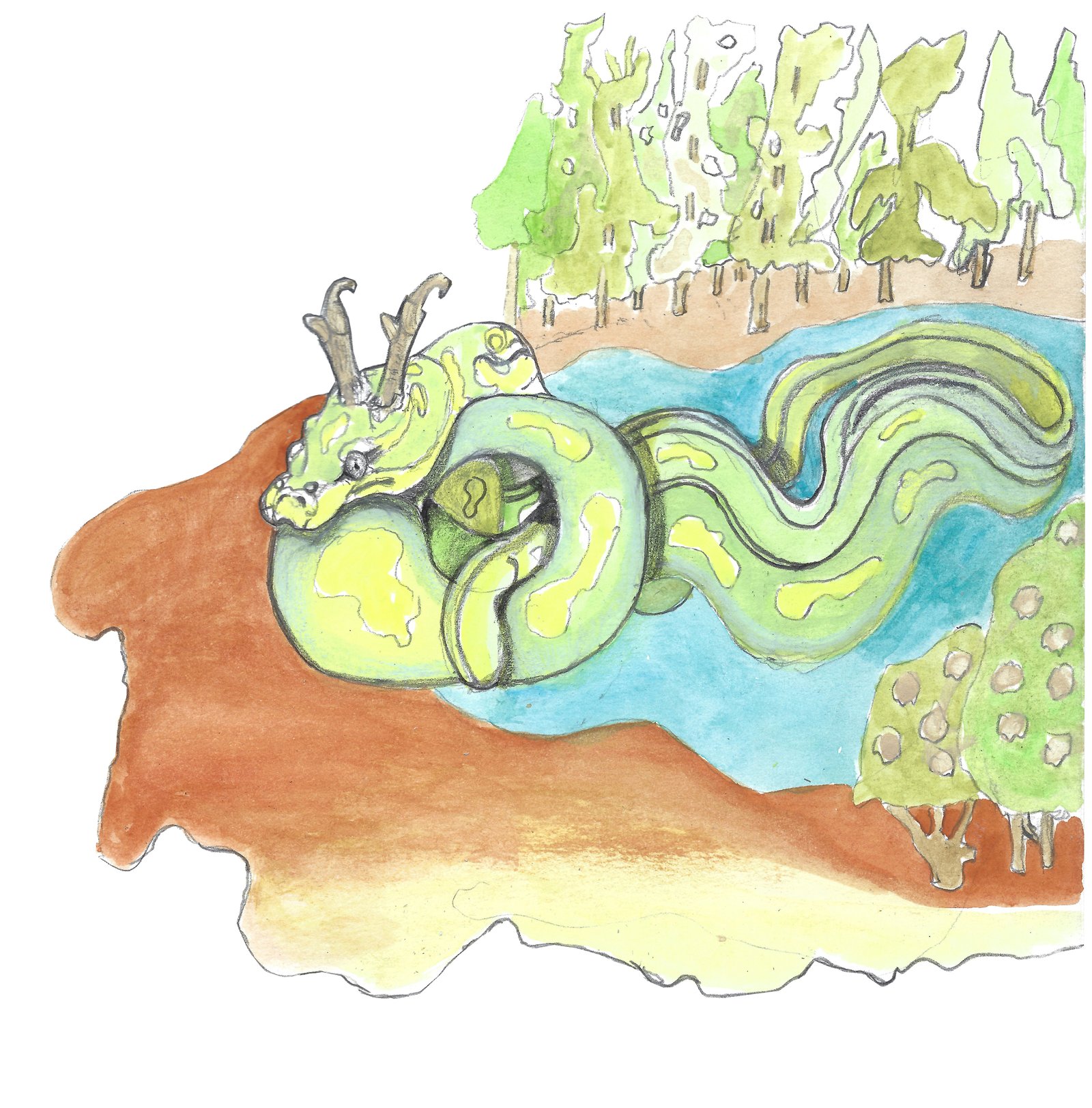
Each Lenape family owns an acre bordered by mountain laurel on the sides, one single trunk of Post Oak surrounded by forked trees of several species around them in a circle on one side, and a Post Oak with three trunks on the other side surrounded once again by forked trees. In the middle, each family has a grove of scrub oak to harvest the acorns and a patch of wintergreen (medicinal) and sweetgrass to keep the mosquitoes away.
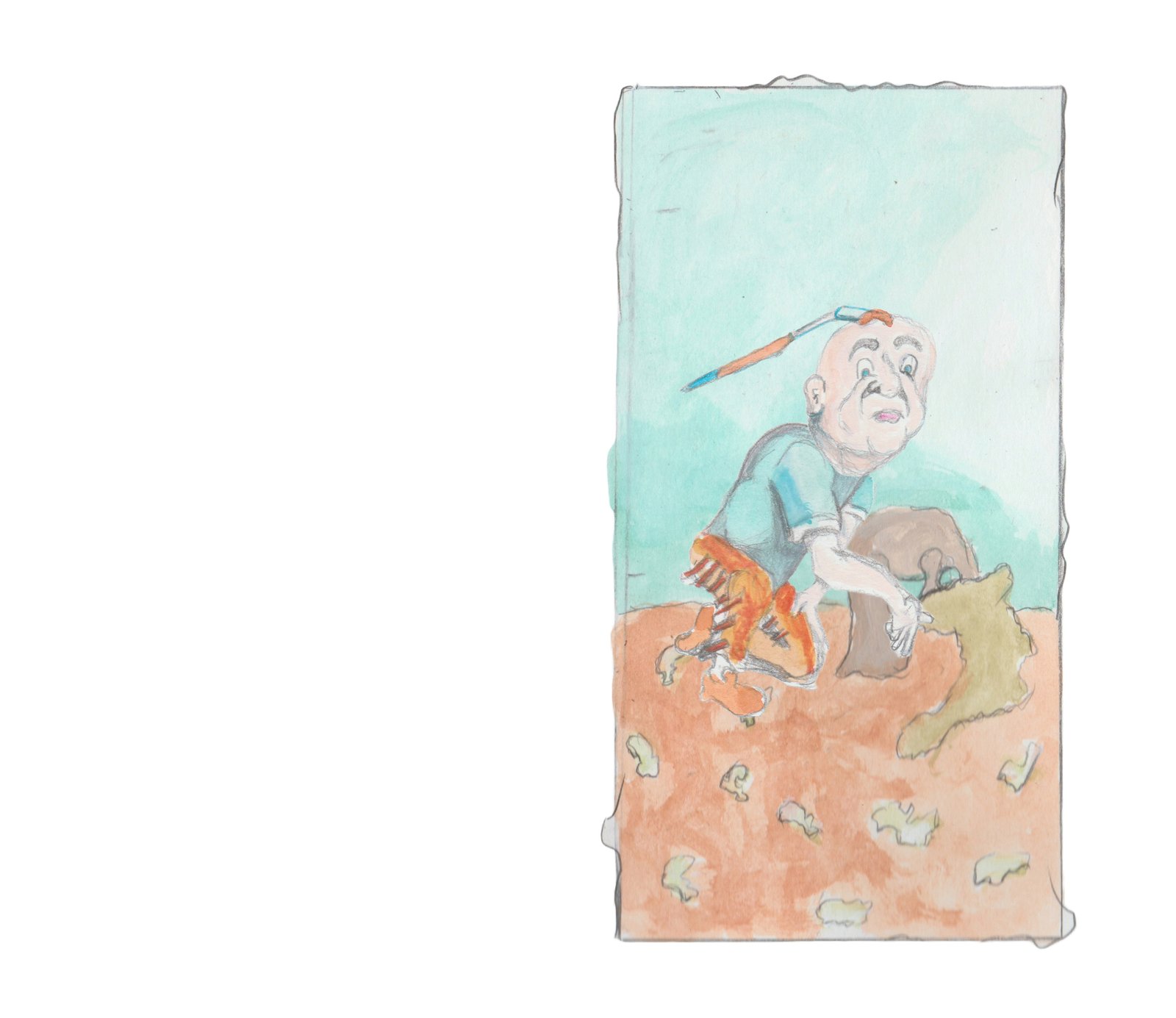
Pop-Pops
Then, on the north-west side of Halfmoon Hill, they planted their farm, with an irrigation ditch lined with seashells going down the face to flood the bottom plain for farming. The top of the hill shines brightly with crushed seashells, silicone, and quartz. From its zenith, heading southeast, is their hunting ground, with a clearing at the end to push the deer into.
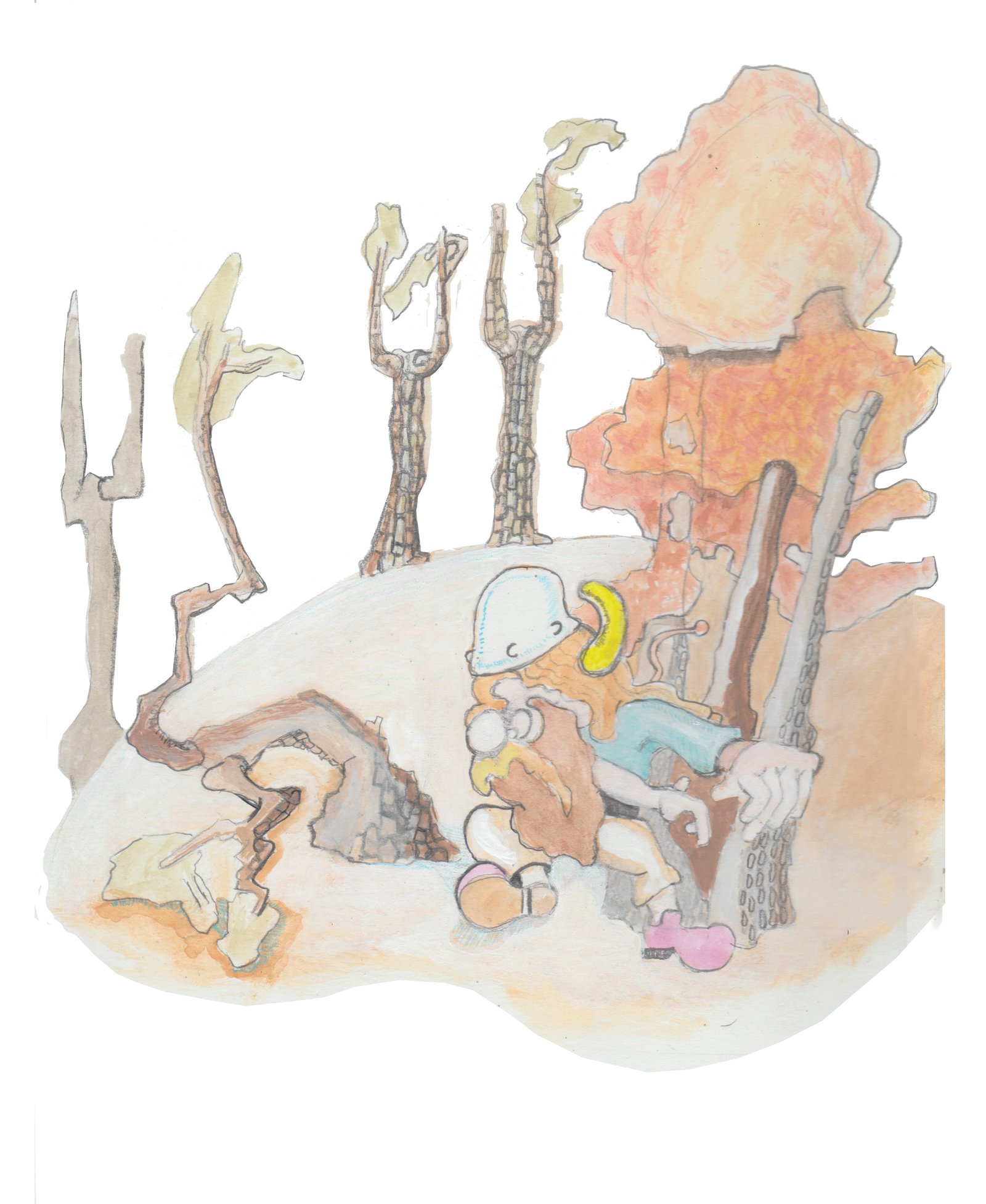
They don't just shape the trees for ornamental effect; they use trees bent at 90-degree angles at the height of a deer's back to mark directions on trails and point to safe crossings on rivers. You probably have seen them all over and never knew what they were.
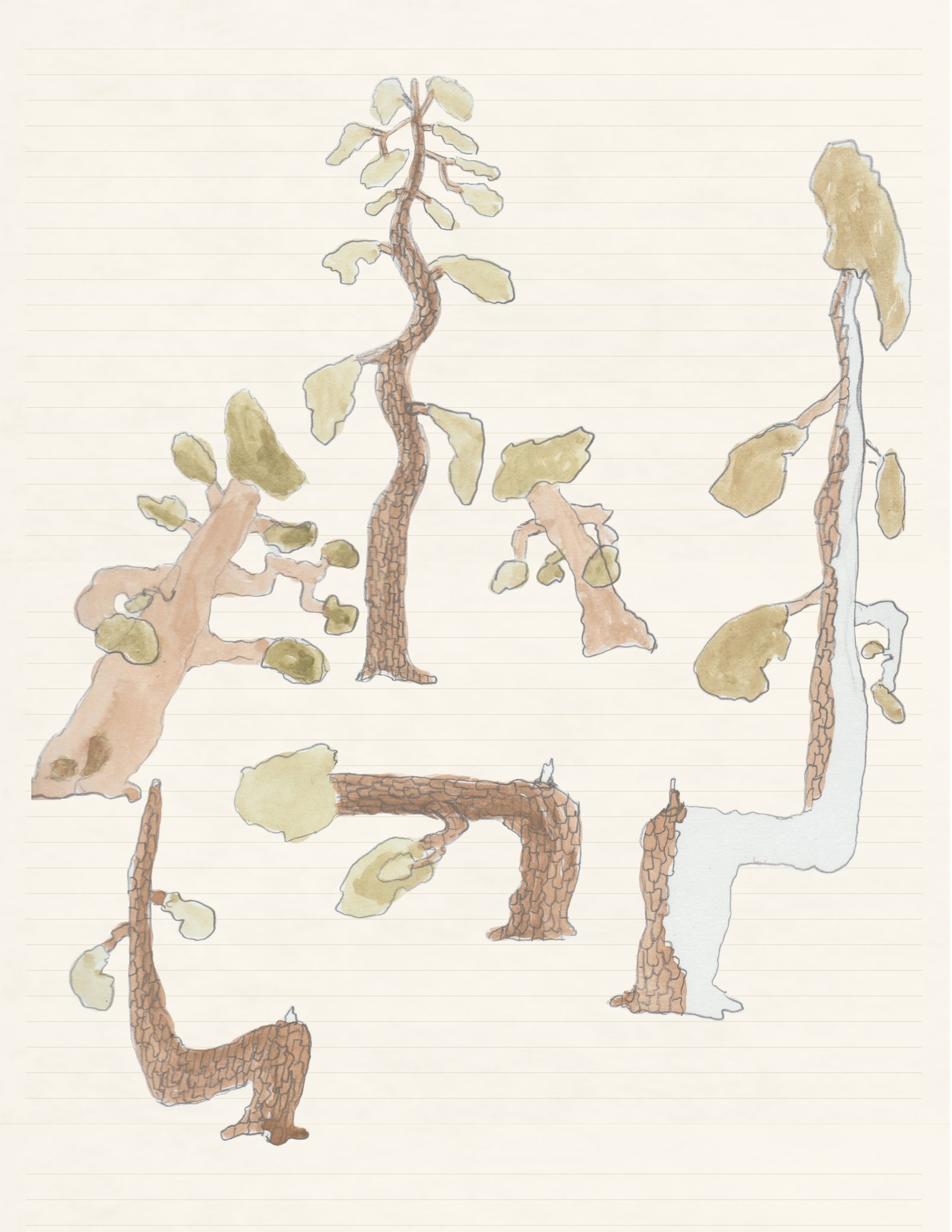
Nattrolls used to get in trouble with the Pineys (us locals of the Pine Belt) here a few years ago. It was the practice of some of my friends to let their pigs run wild through the woods and come back at night. Well... a few Nattrolls would
eat them as trail mix as they trolled about. An accord has been settled, and now only Gramps steals the occasional boar.
Beyond the bog iron workers we have riding their carts down our dirt roads, we also have teams of colliers who lumber the pines to make charcoal in huge fires and process turpentine. You can see their shacks on rails, which they can pick up and move to the next forest after they have exhausted all of the trees in an area. Good folk, but not well respected.
Many trains cut through the area. The main one is the Tuckerton Railroad. It runs from Whiting to Clam Town (Tuckerton) and provides plenty of flux for the bog iron. My uncle is an engineer on that line. He has met Bjorn and thinks he is a fine fellow. My Uncle Vern just doesn't understand how he shrinks down small enough to ride in the freight car with me with our legs hanging out.
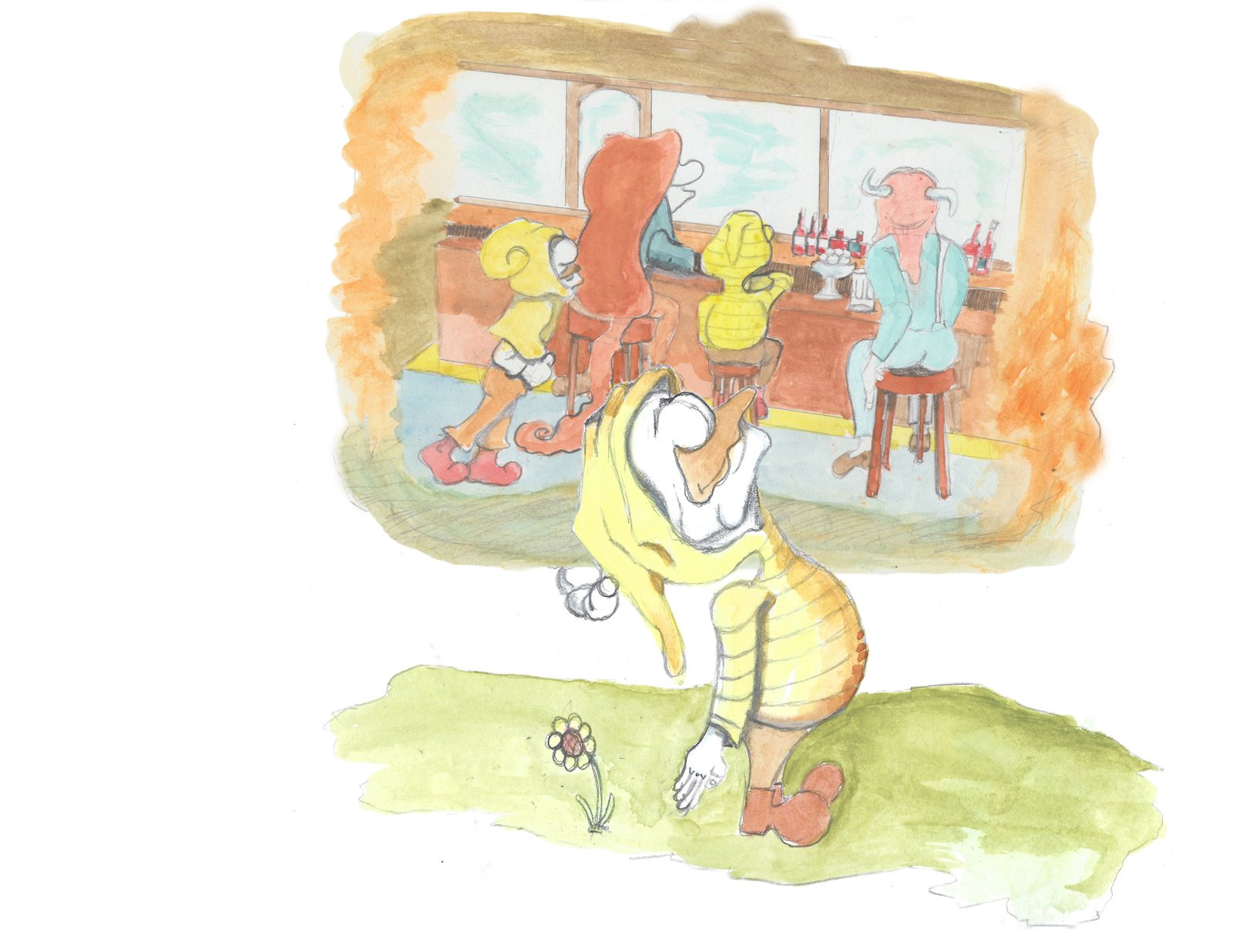
Karl the Shaman
Nattrolls can live for thousands of years. Some Nattrolls are half dwarf like Karl and half god like Helgi. These Nattrolls do not have horns. In advanced age he horns tend to droop in opposite directions. Some vain Nattrolls will tie strings in between them to keep them aligned, but Gramps could care less. After living in caves with the dwarves for so long, the Nattrolls developed a thin membrane from living in dark caves for centuries that protected their eyes from sunshine. The membrane is similar to brille or adipose eyelids on fish and reptiles. In the past, it was believed they avoided sunshine, which created the misnomer that Nattrolls (night trolls) would turn into stone when the sun rose.
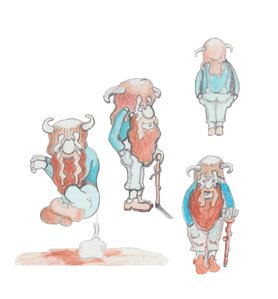 Gramps
Gramps
They are shapeshifters who appear different in different dimensions and can change size at will. Trollheim is on the other side of the veil on the cusp within the area called Fox Hollow on the other side of the Disappearing Pond. There they appear to have more of a characterized caricature.
They build homes into the sides of hills in isolated places or tunnel into the ground with special pine trees they have bent over to serve as a handle on large round doors that are hinged on the forest floor. In Norway, they have carved spectacular ice palaces into the sides of the mountains, like Al-Khazneh in the desert kingdom of Petra.
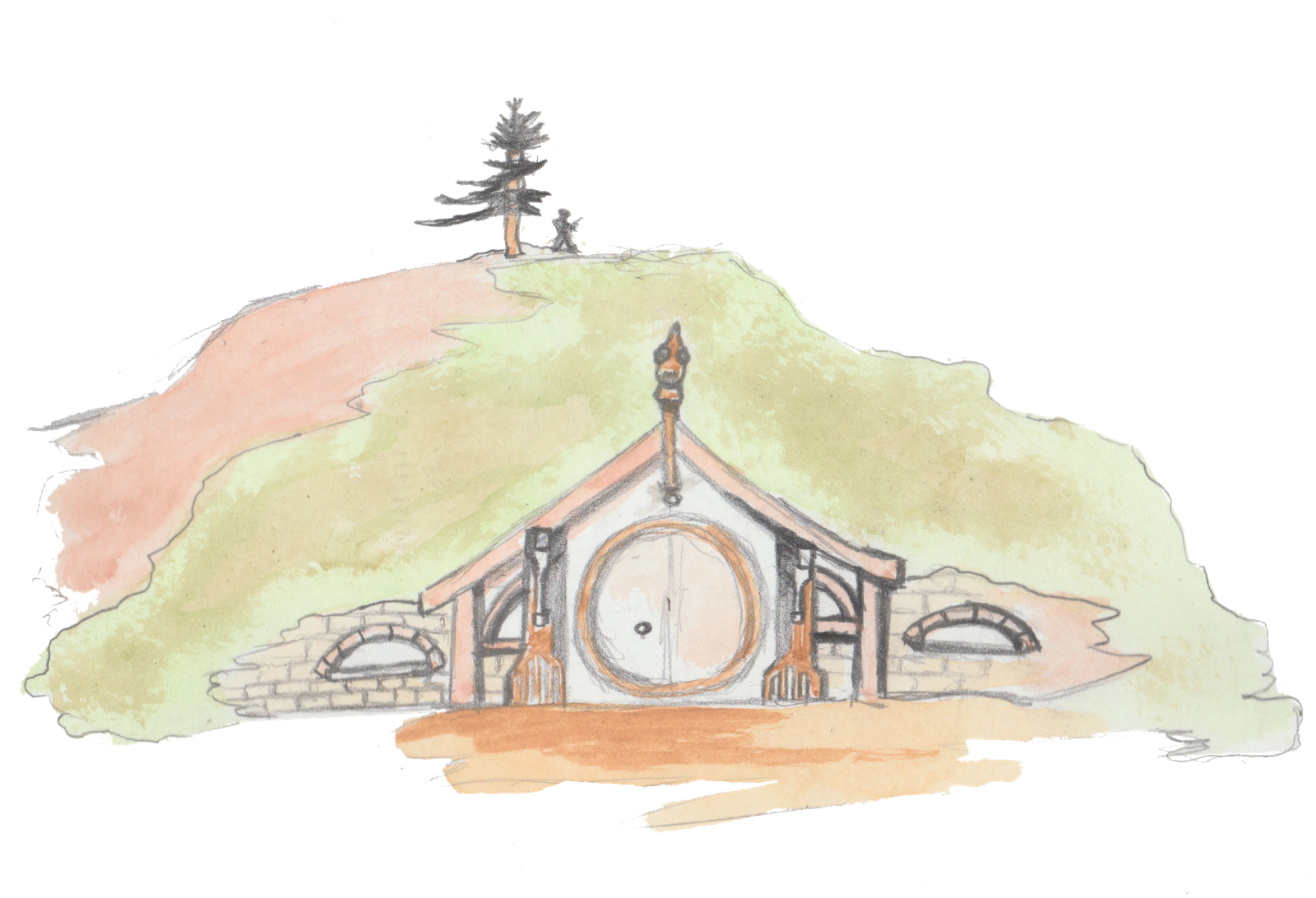
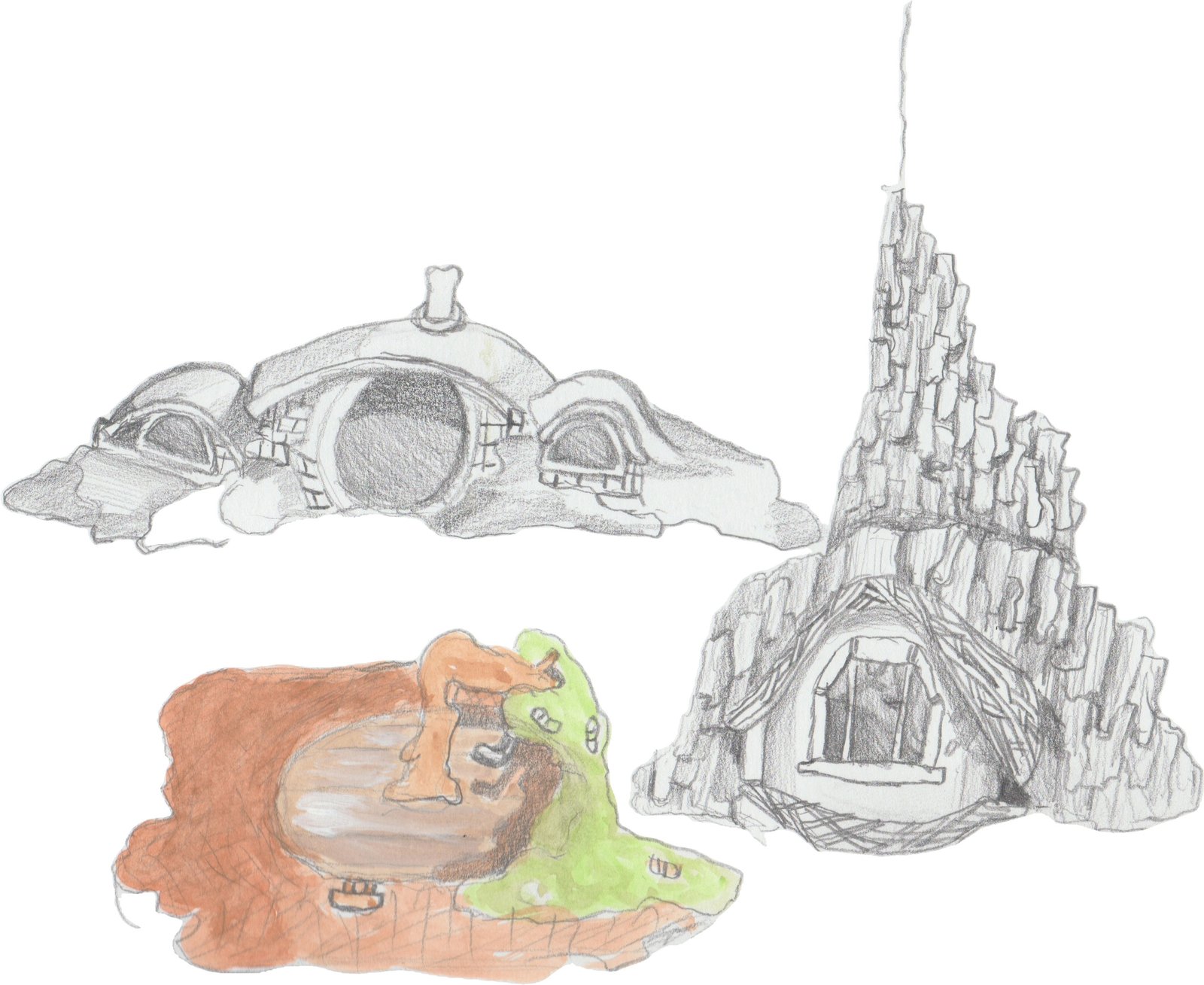
In every Nattroll home they have pets; usually one or two lap bears. Bjorn's
family has their friend Bosco living with them. Most ofthem have come to terms with the cat infestations that sneak through tiny cat holes in their moldings and wainscotting. Bjorn enjoys their company, but his wife, Helgi, has a hell of a time shooing them out with her broom.
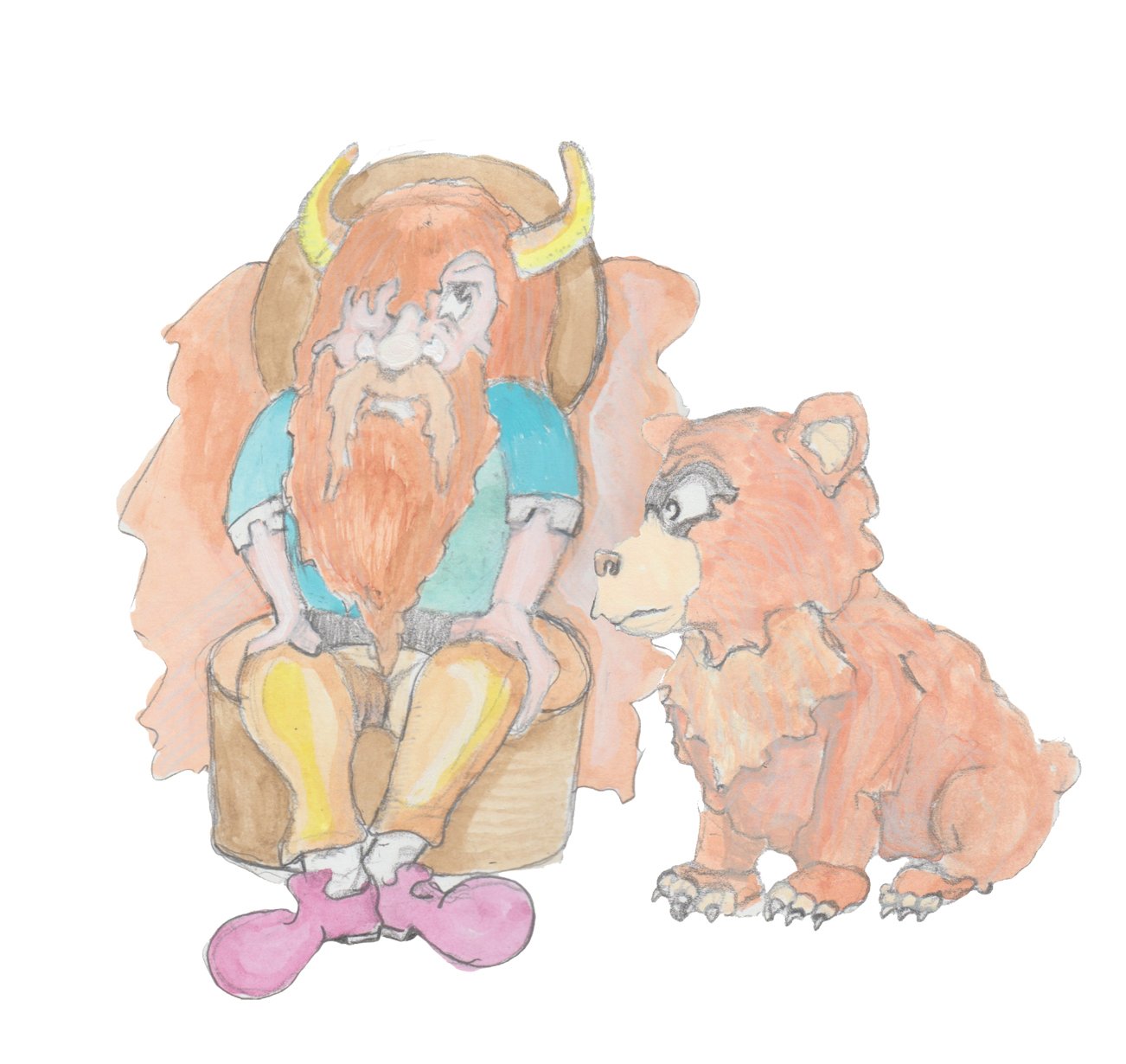
Bosco and Bjorn
See, most people have never seen a Nattroll. Oh yes, the Lenape have been living with them for centuries. The average person of European descent has never seen them. If they do, it is easier for their brains to convince themselves they are looking at a hill or a boulder. Even though there are few hills and absolutely no boulders in the Pine Belt, the glacier ice stopped much further to the west and north.
So how did I get to see them? Well, that is a total different story...
